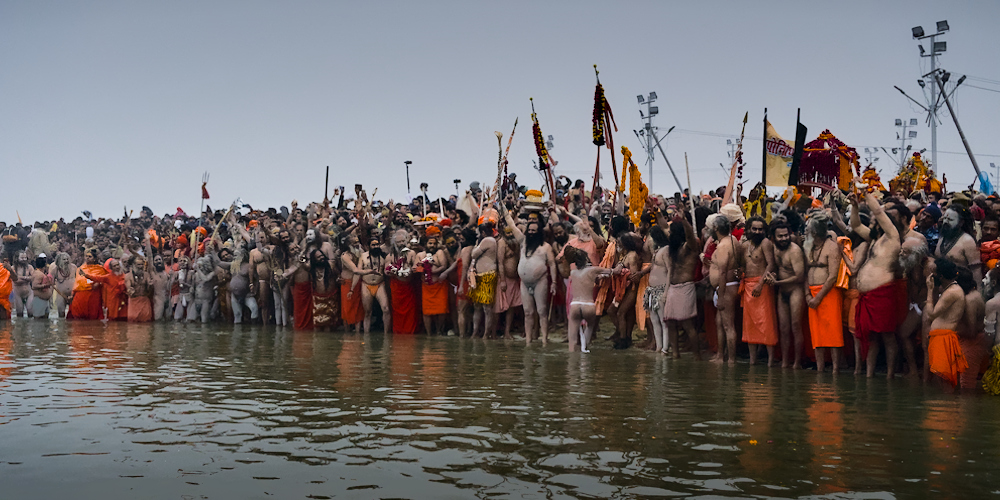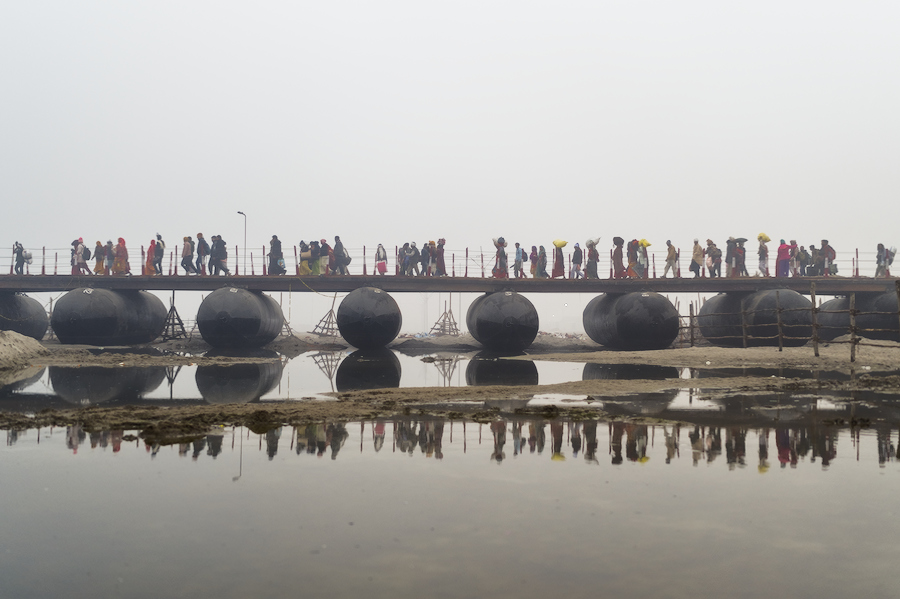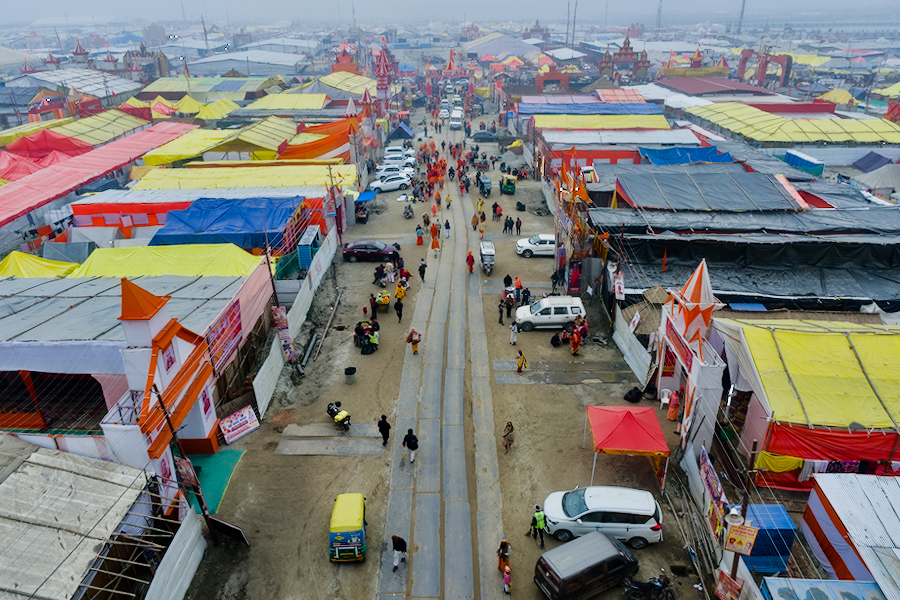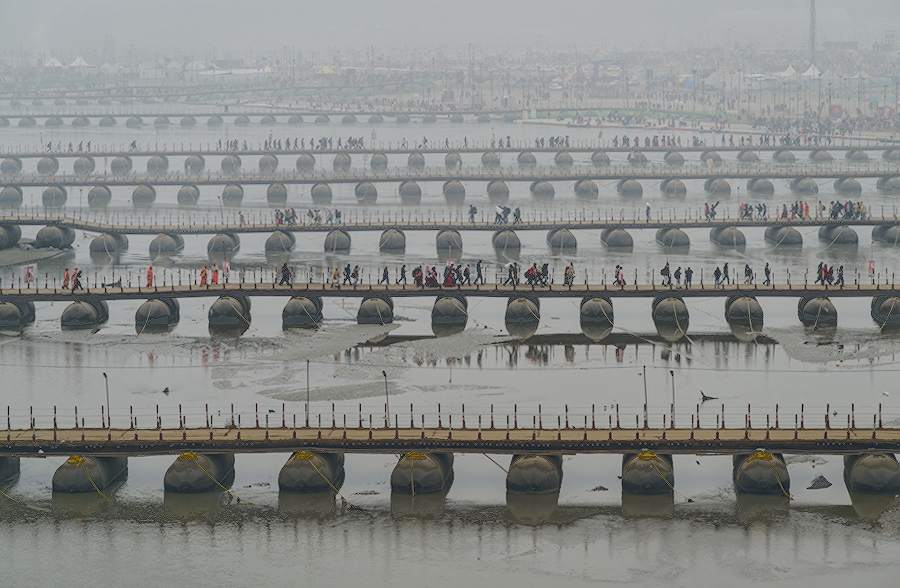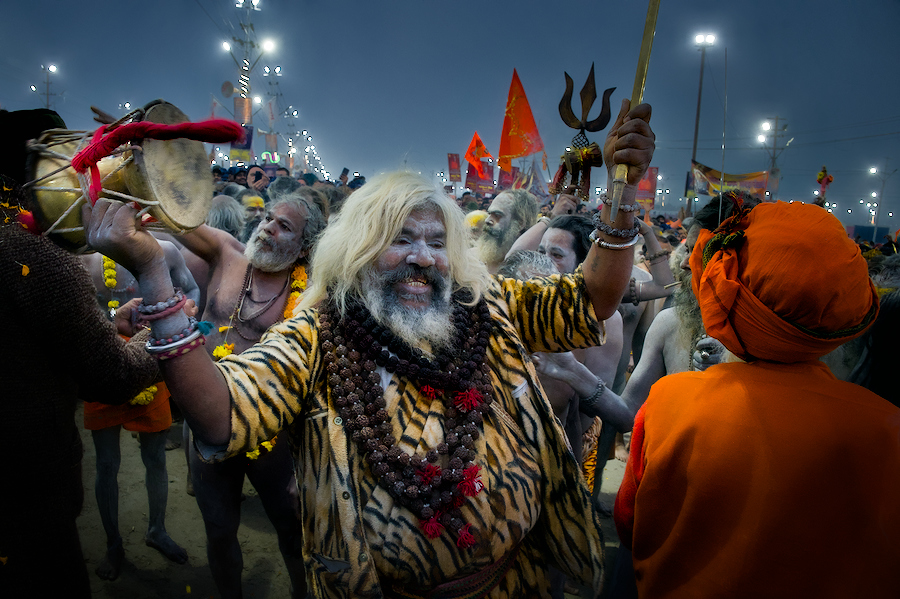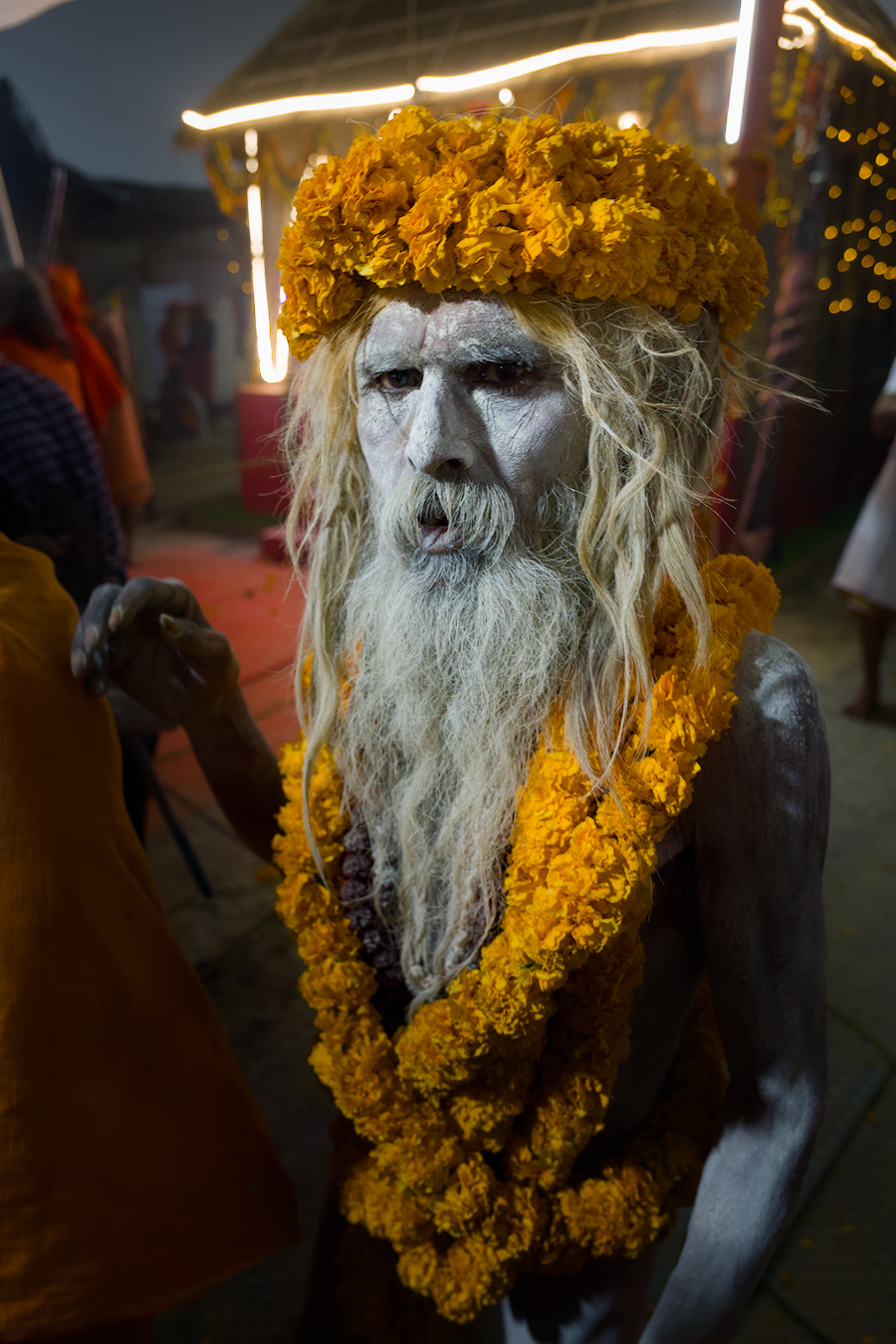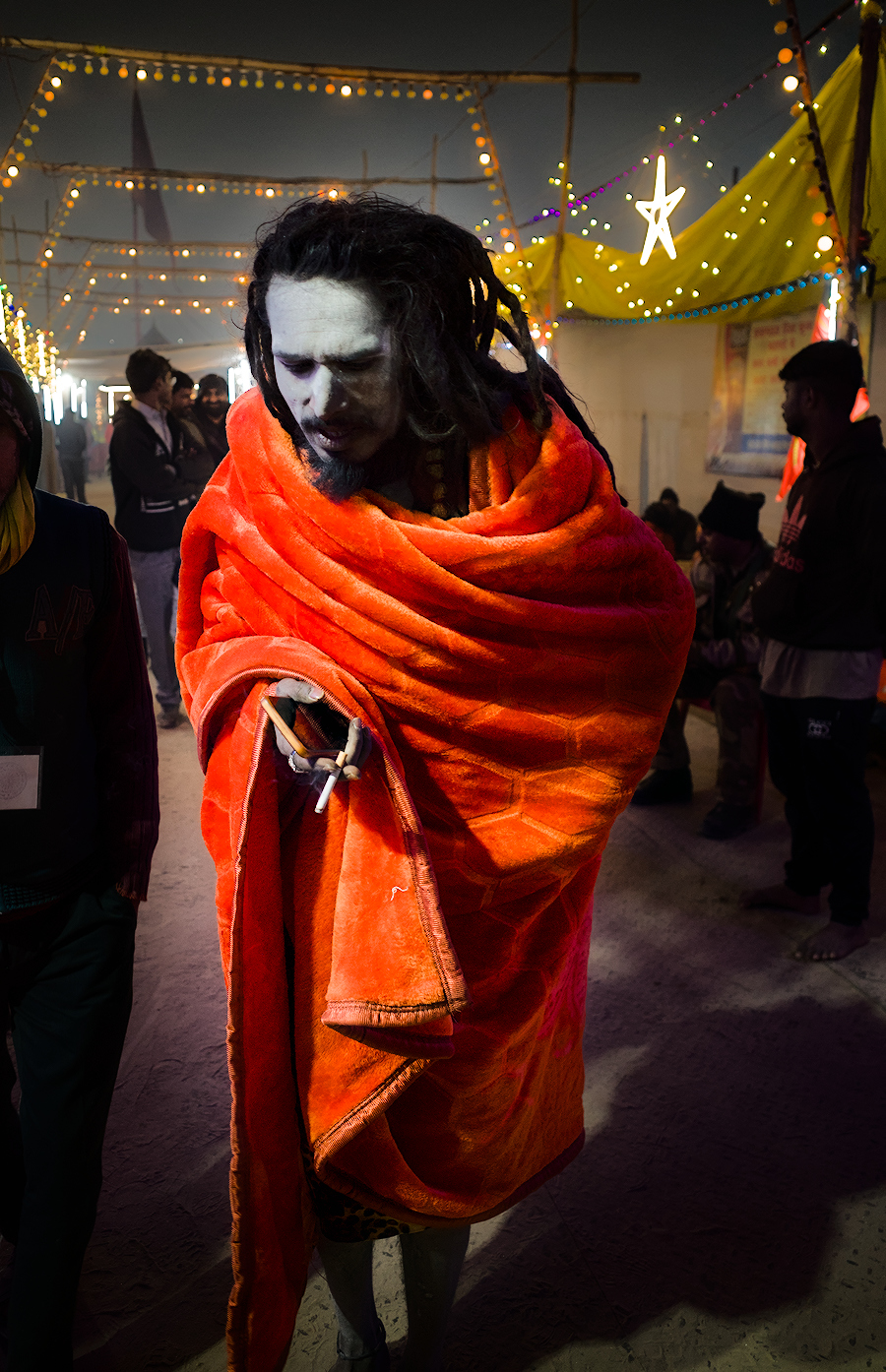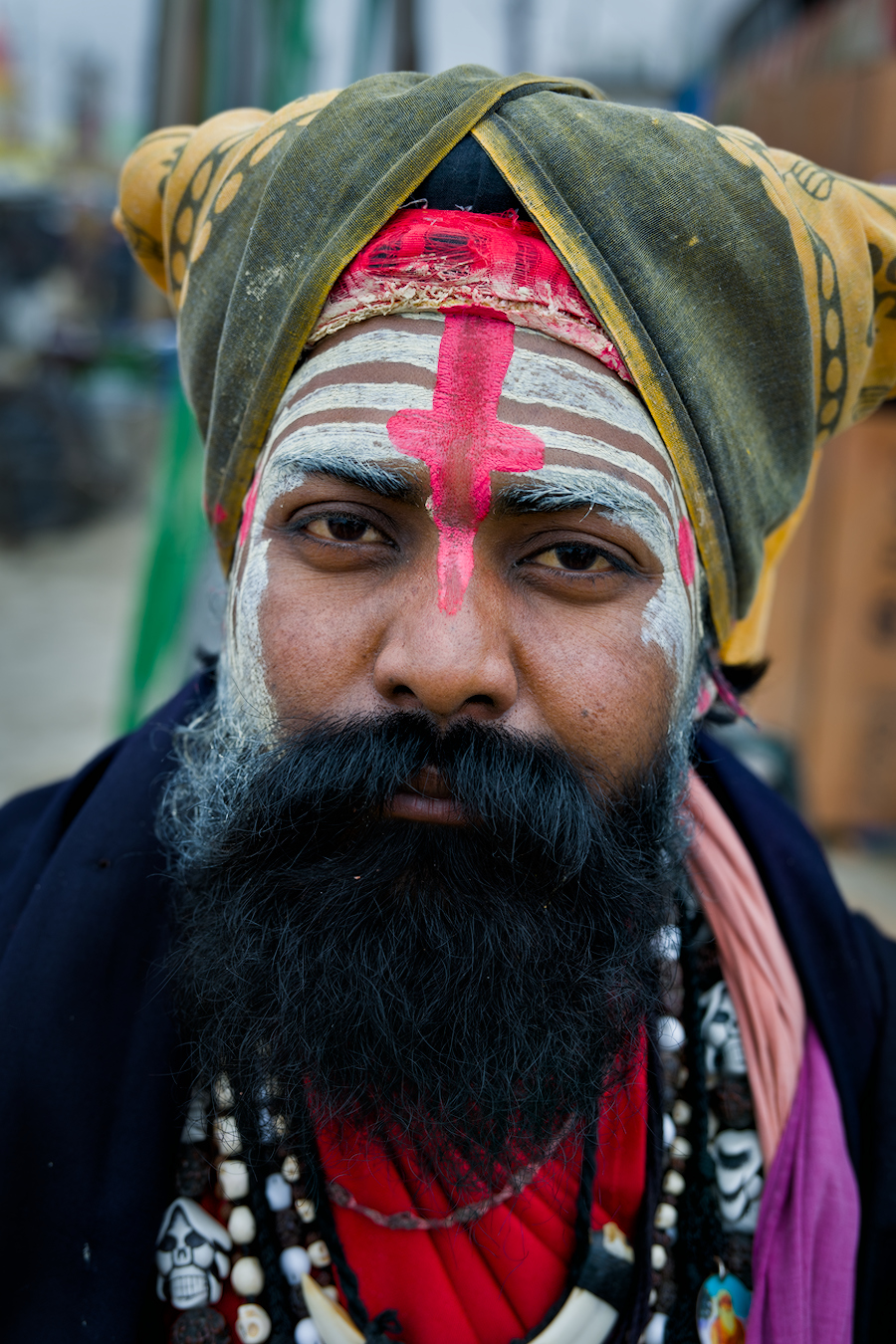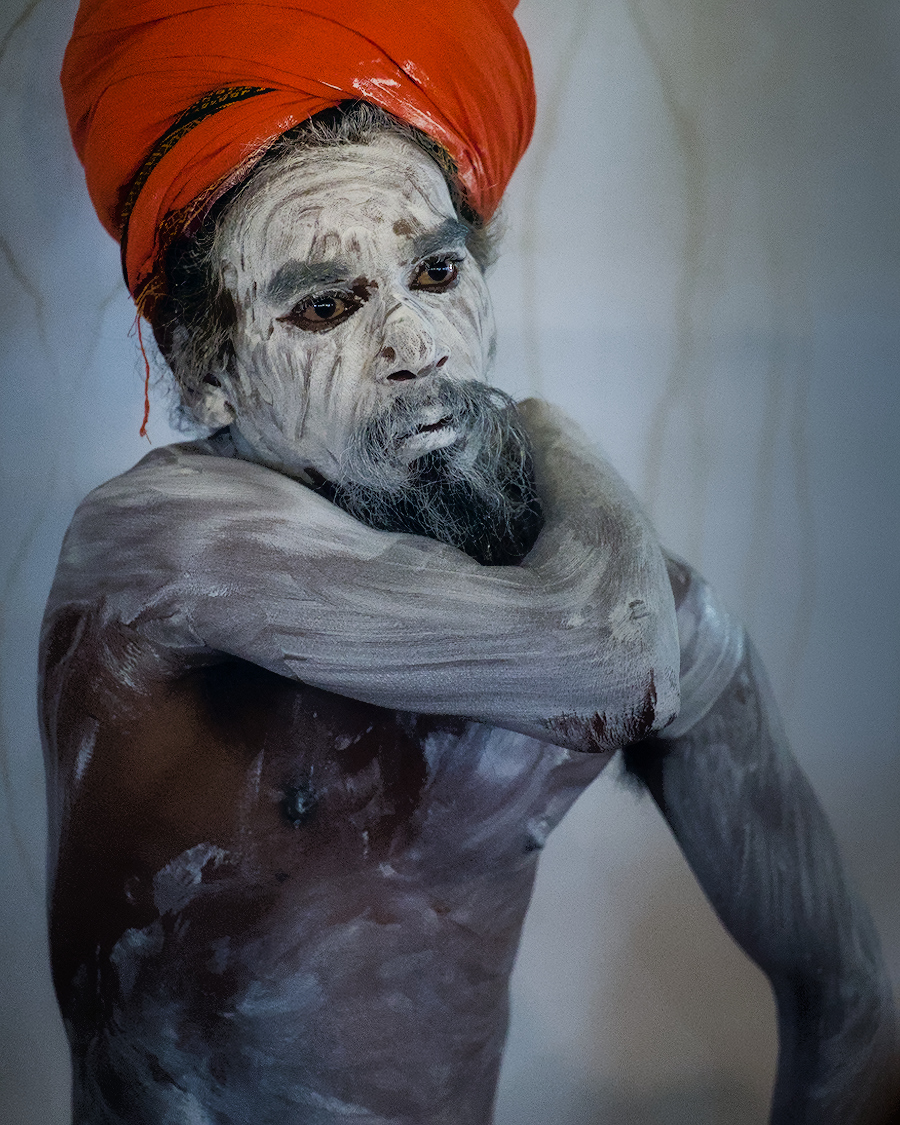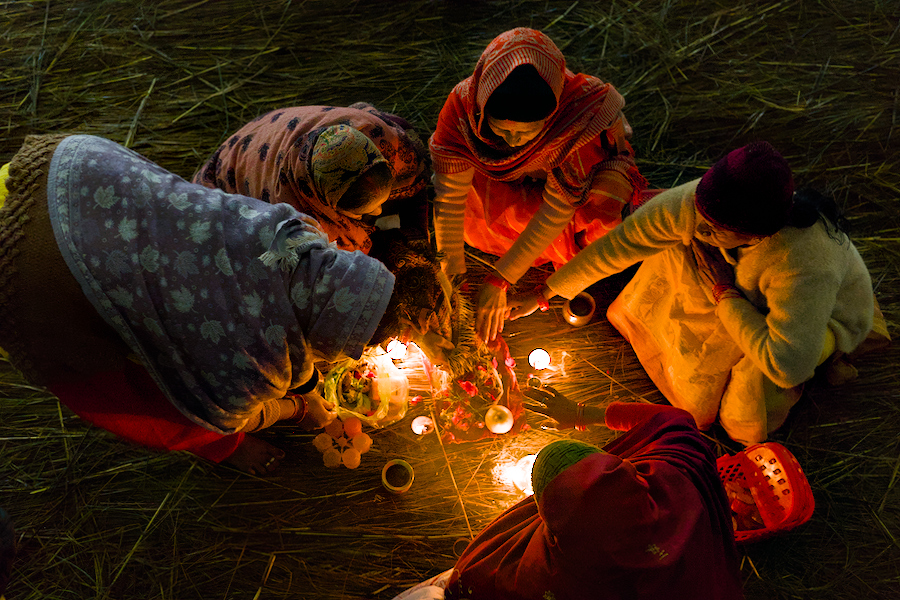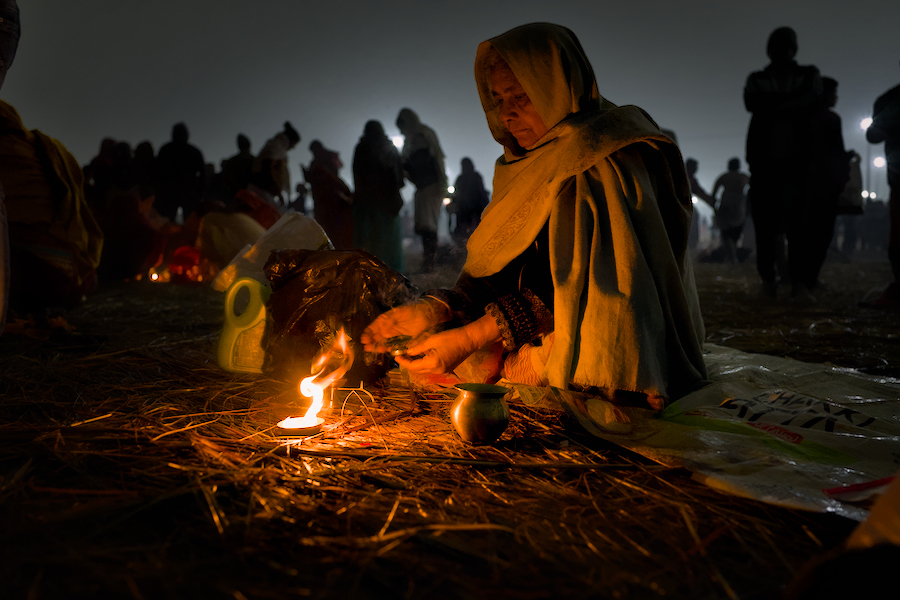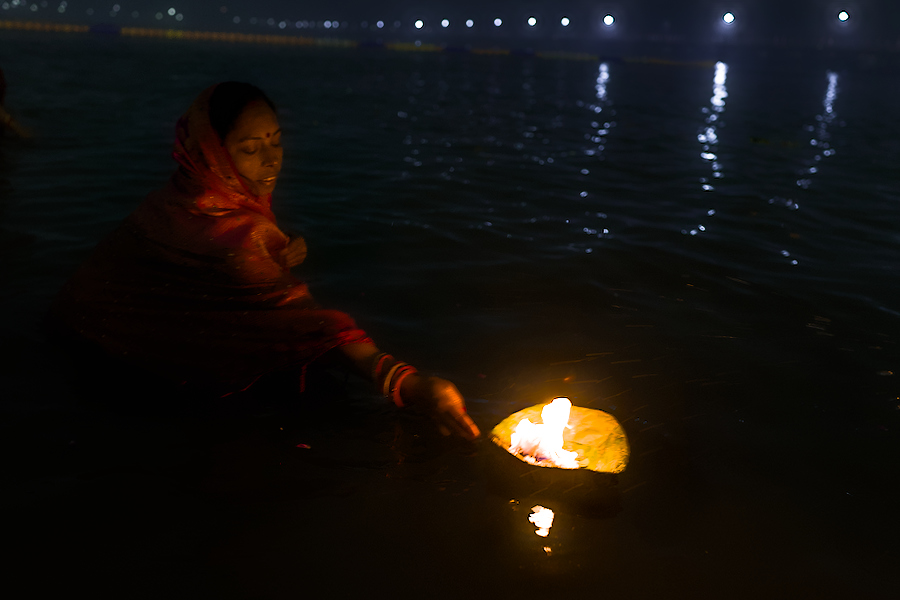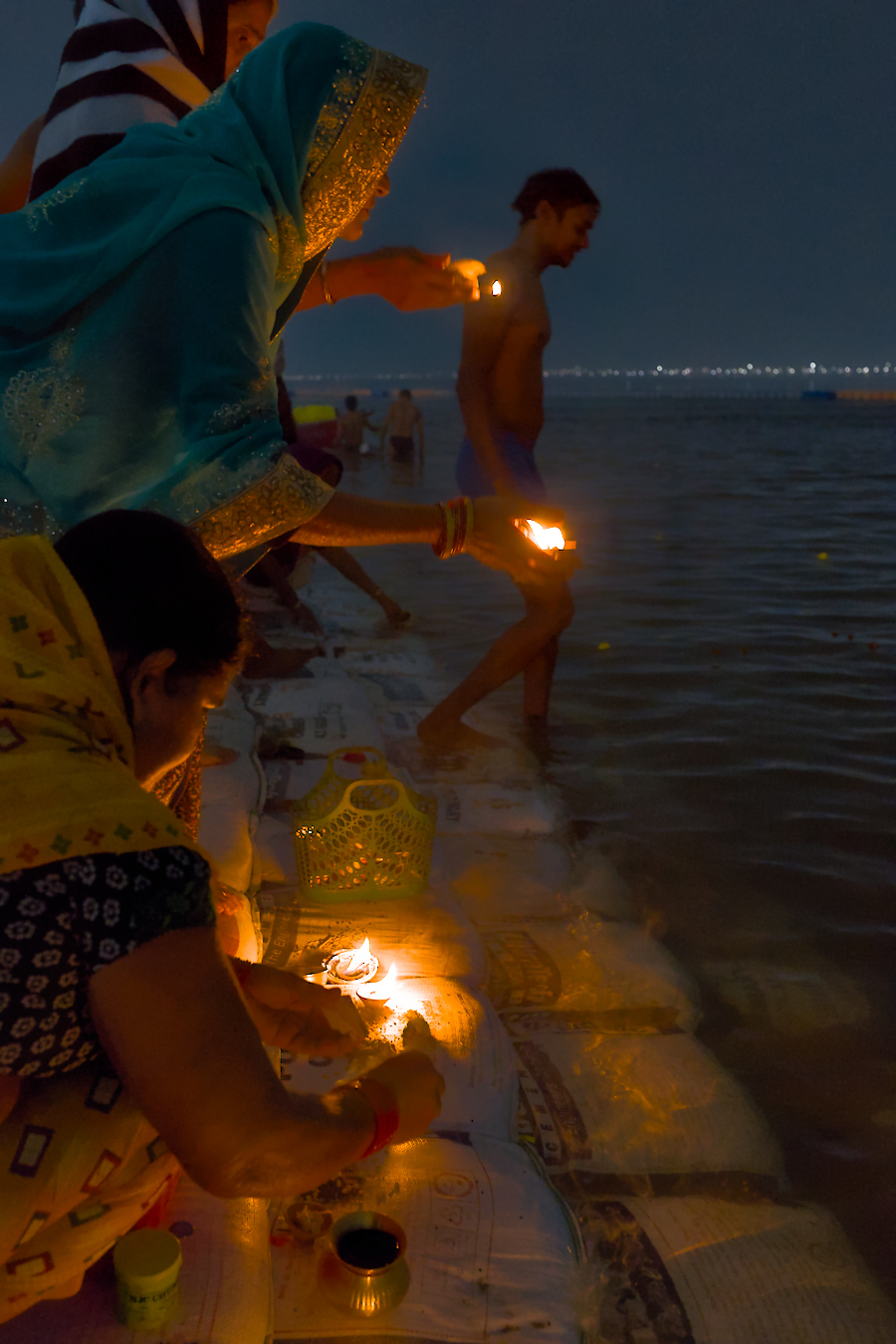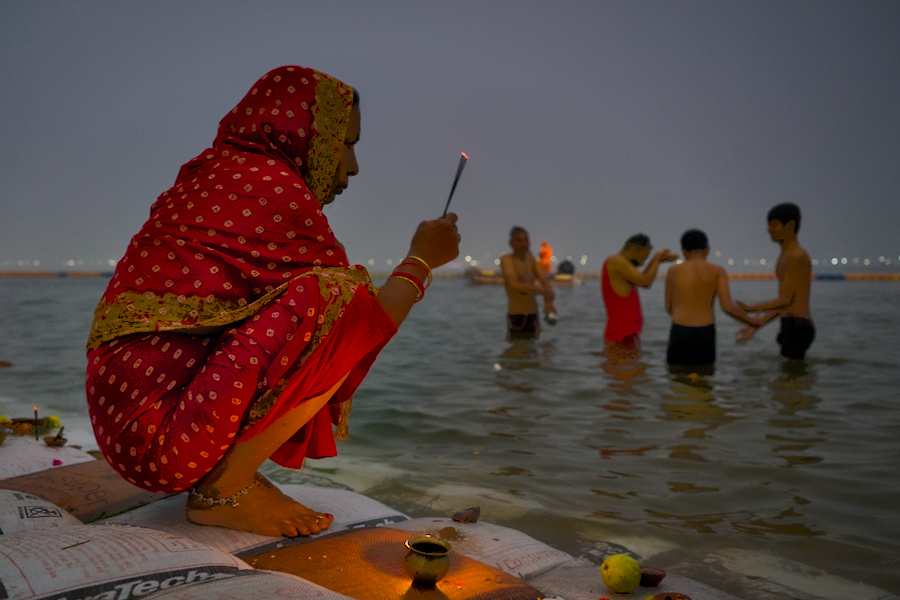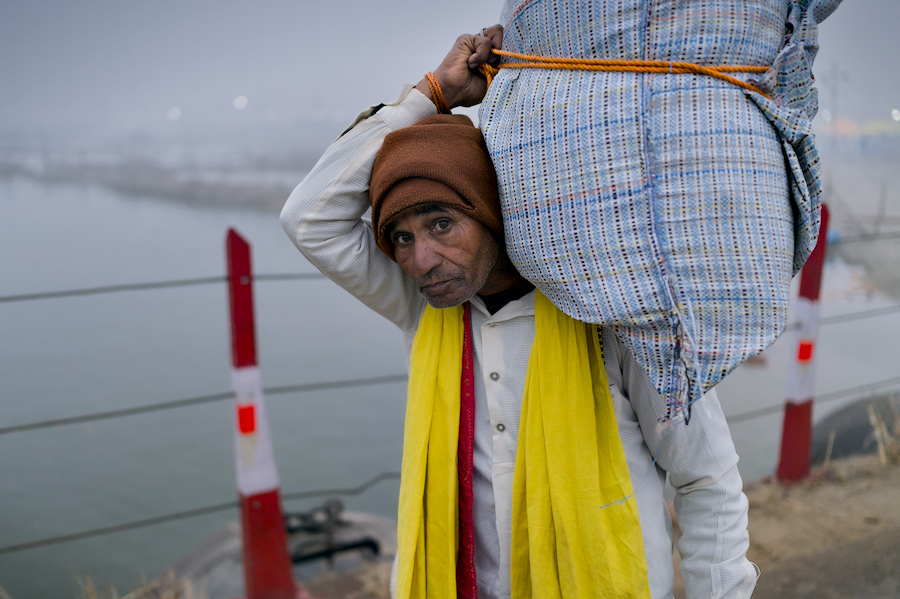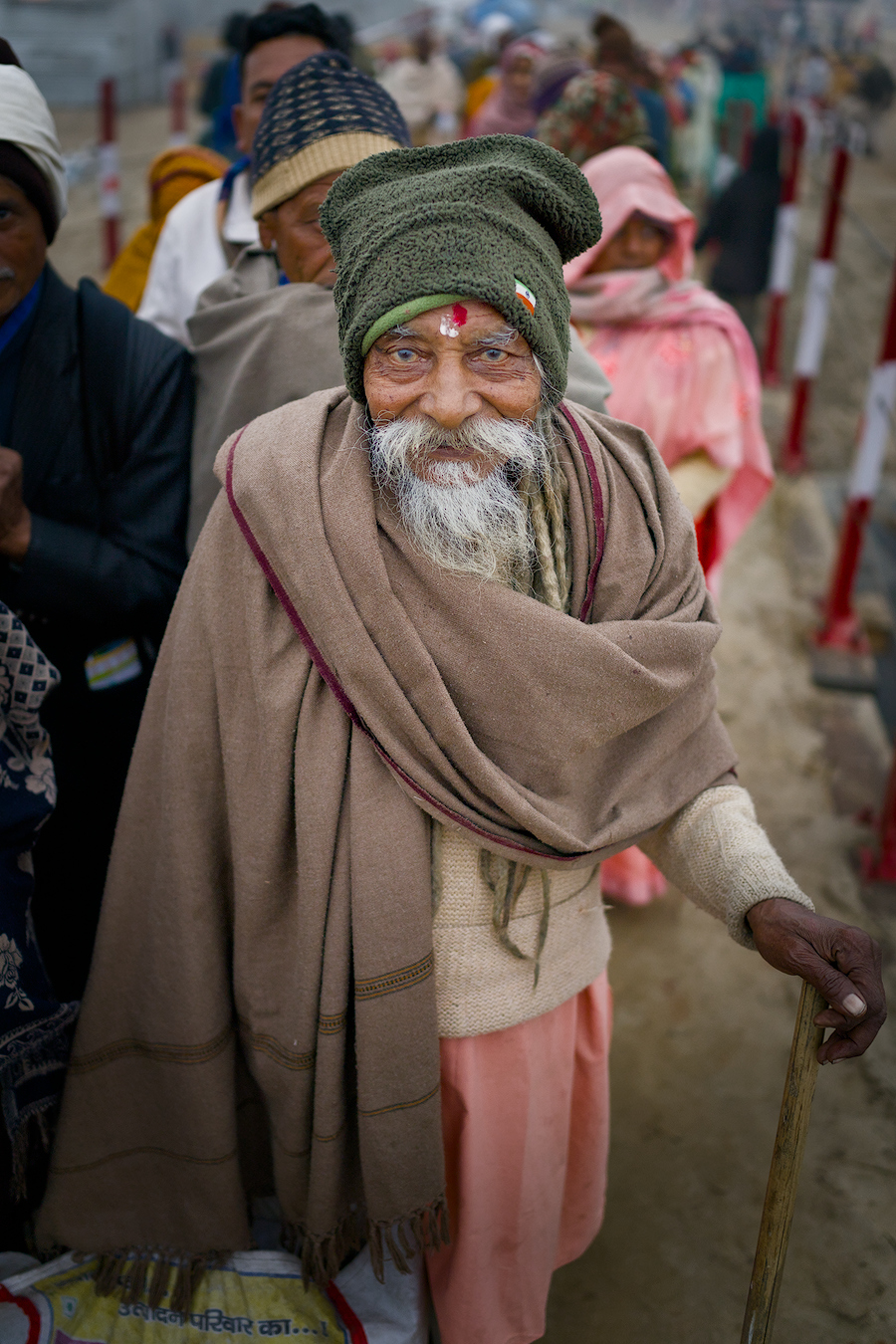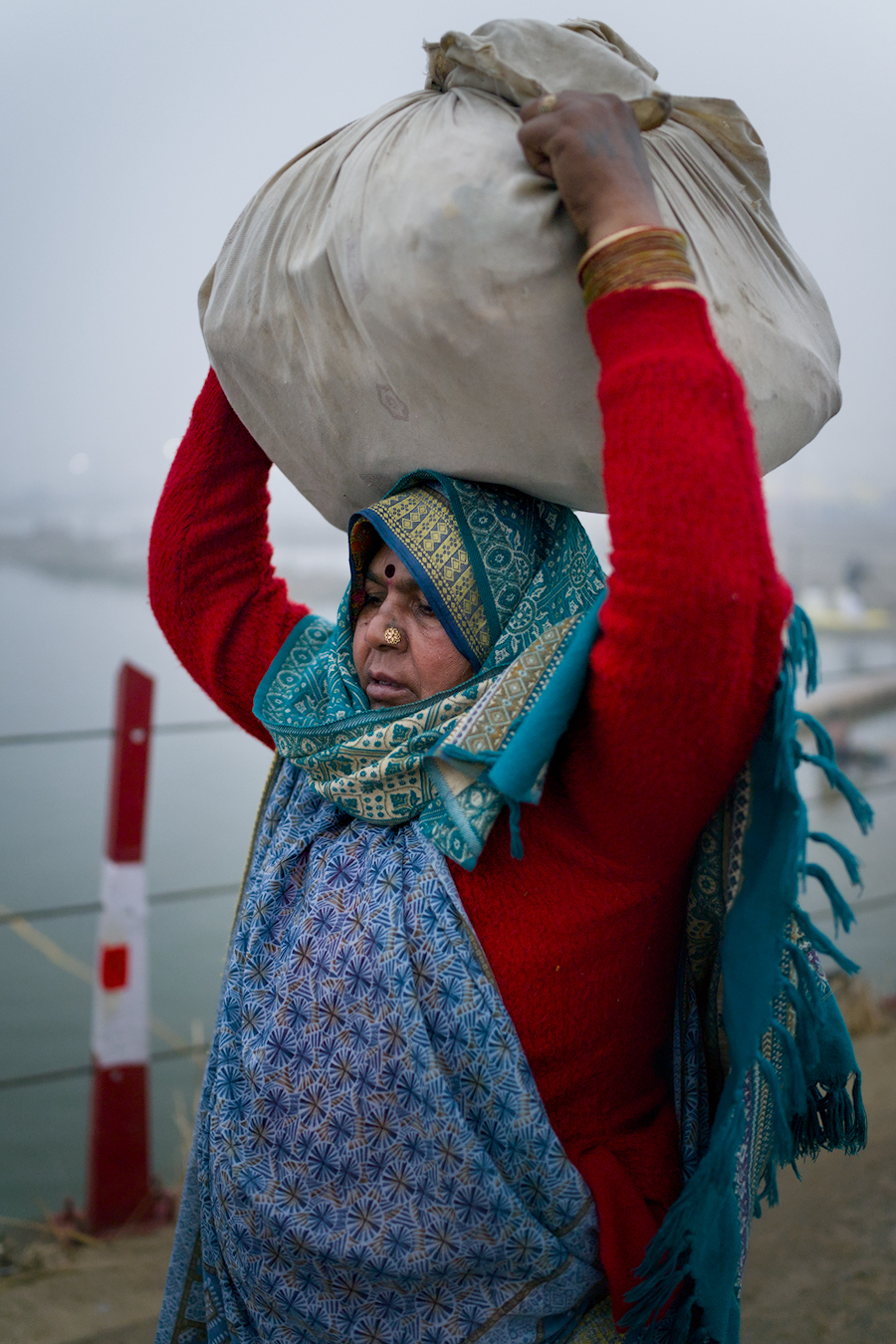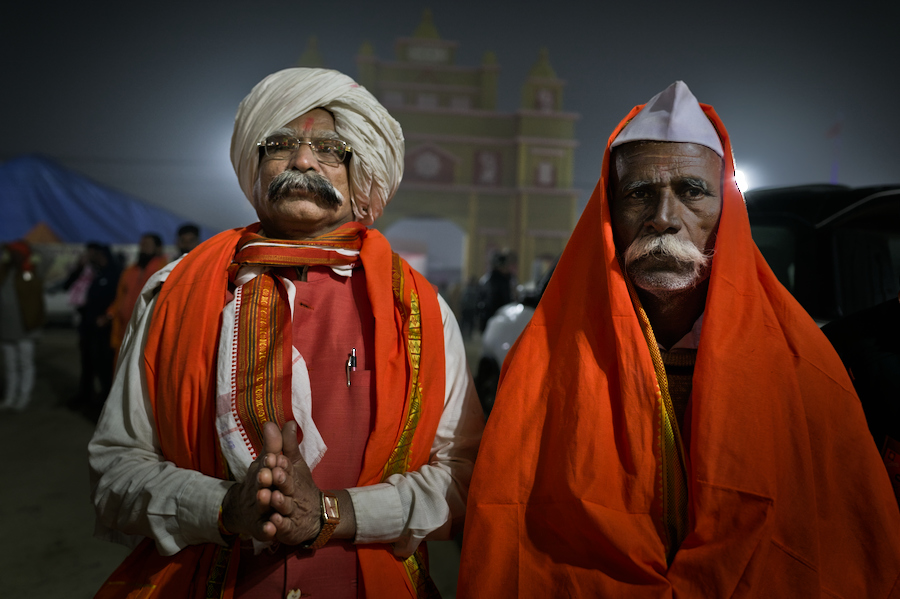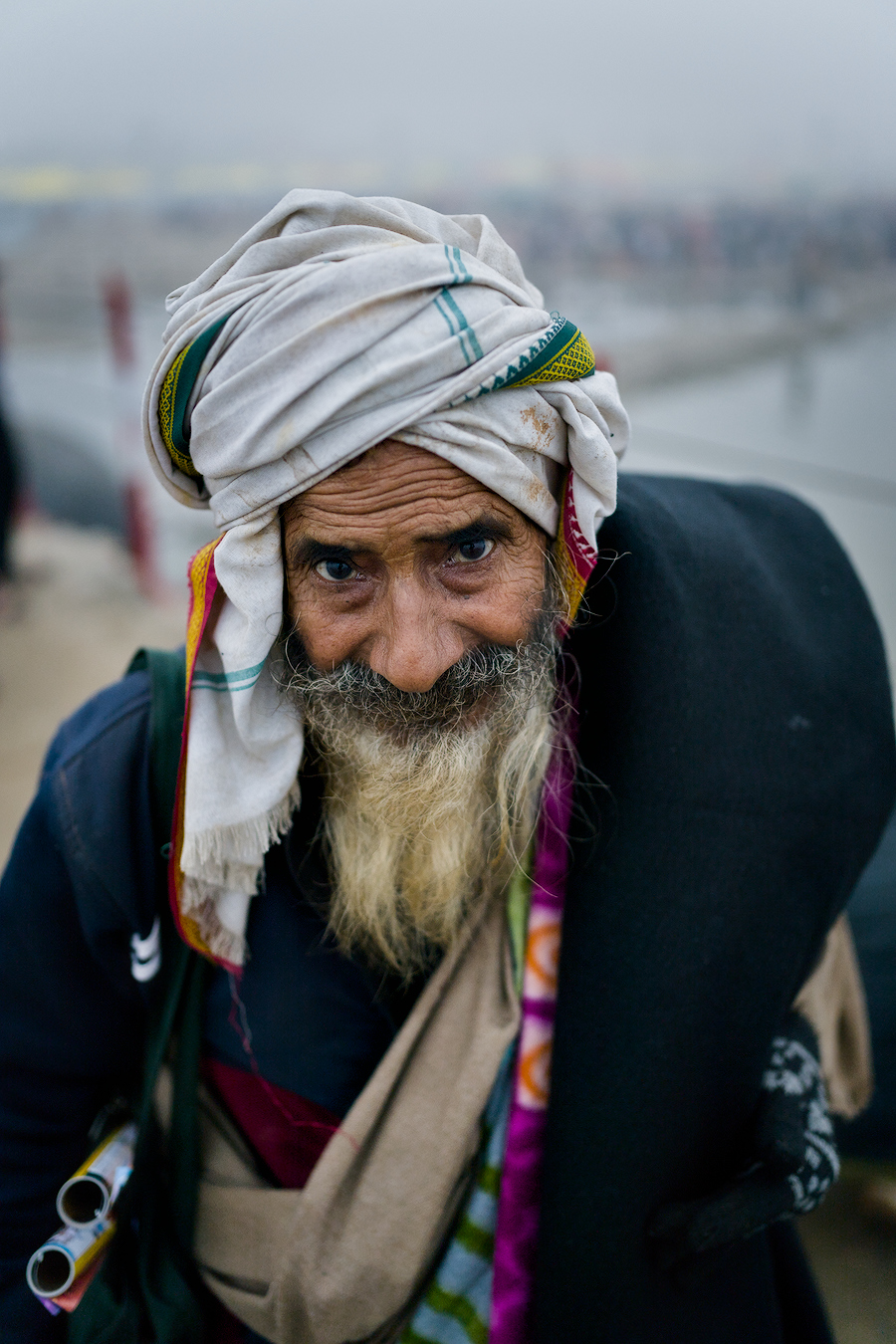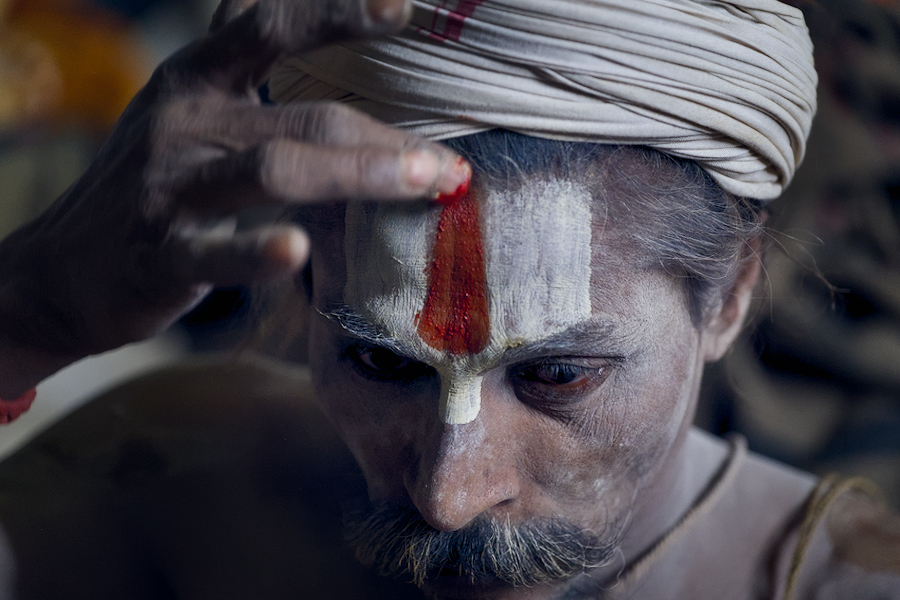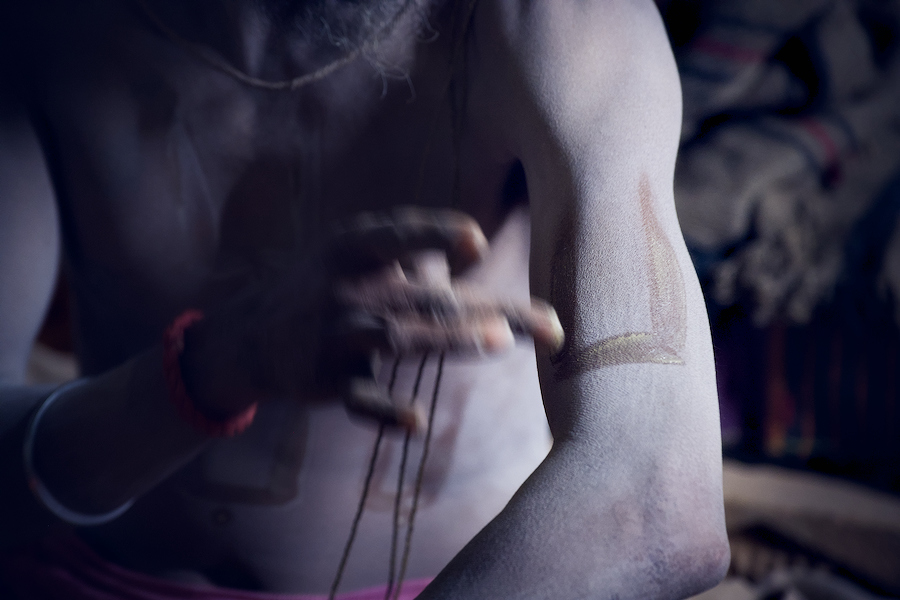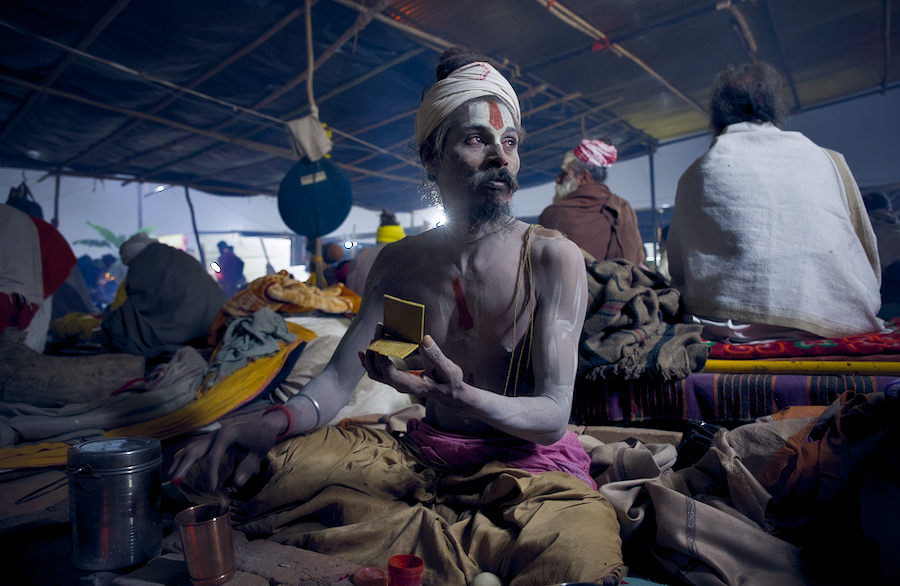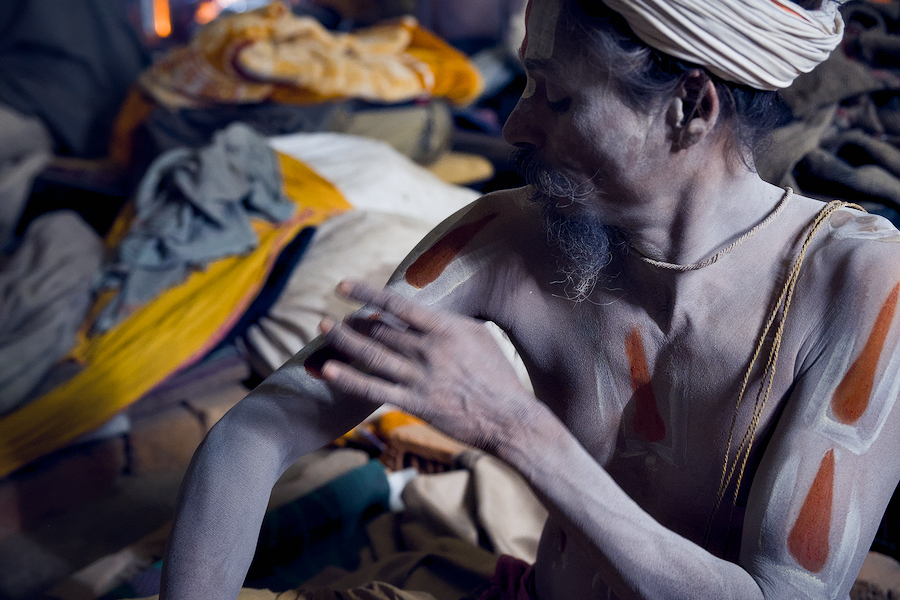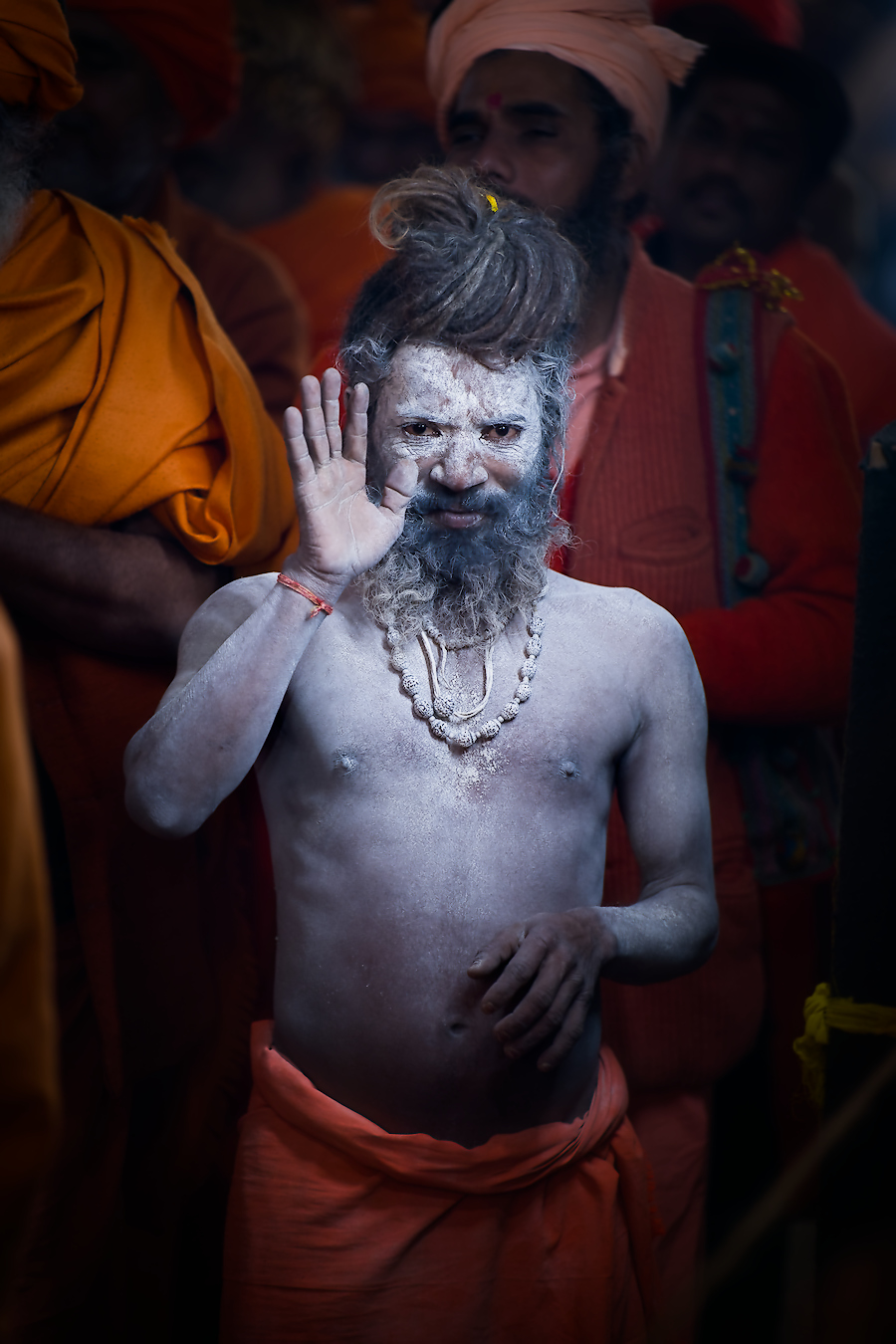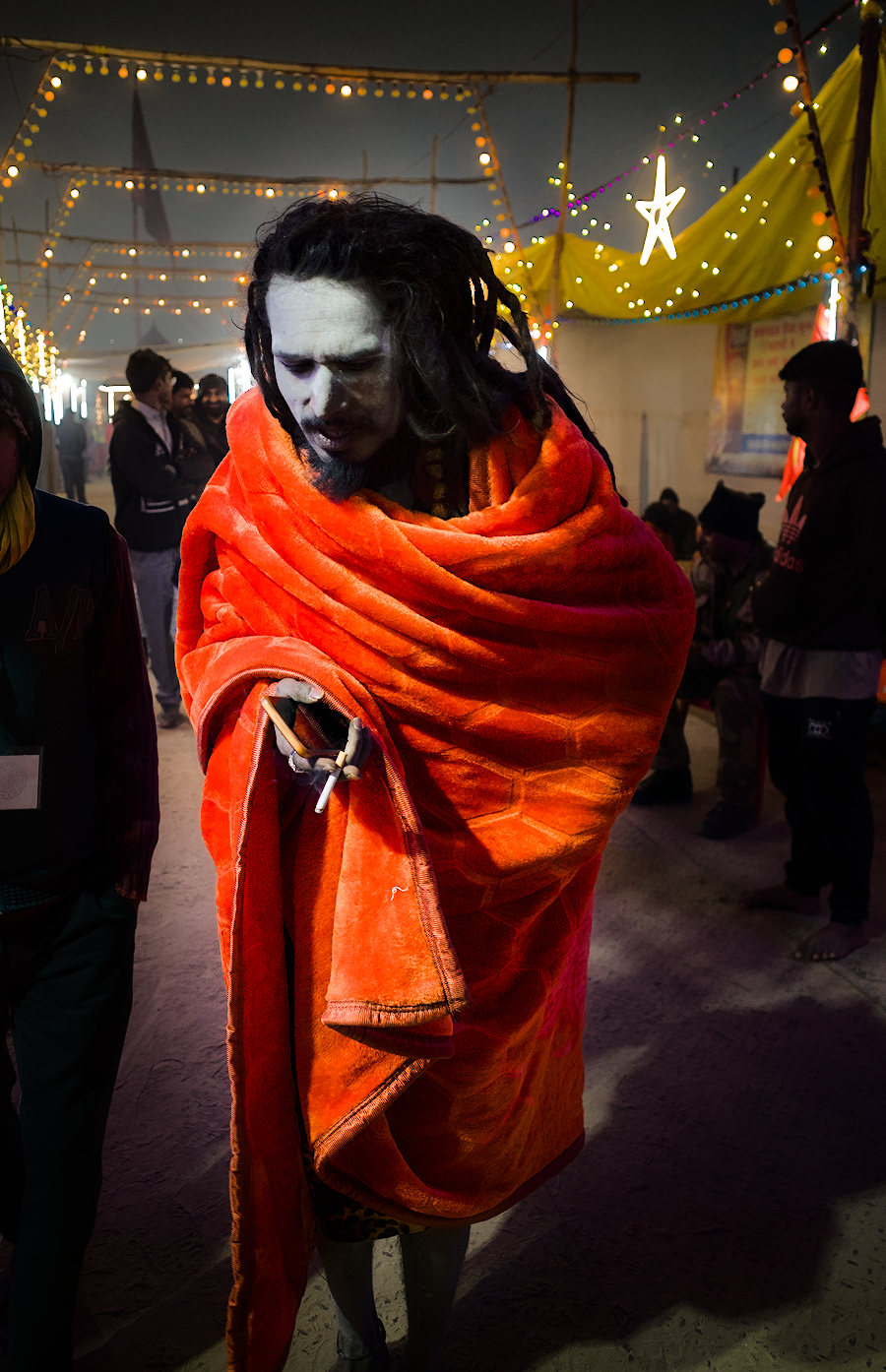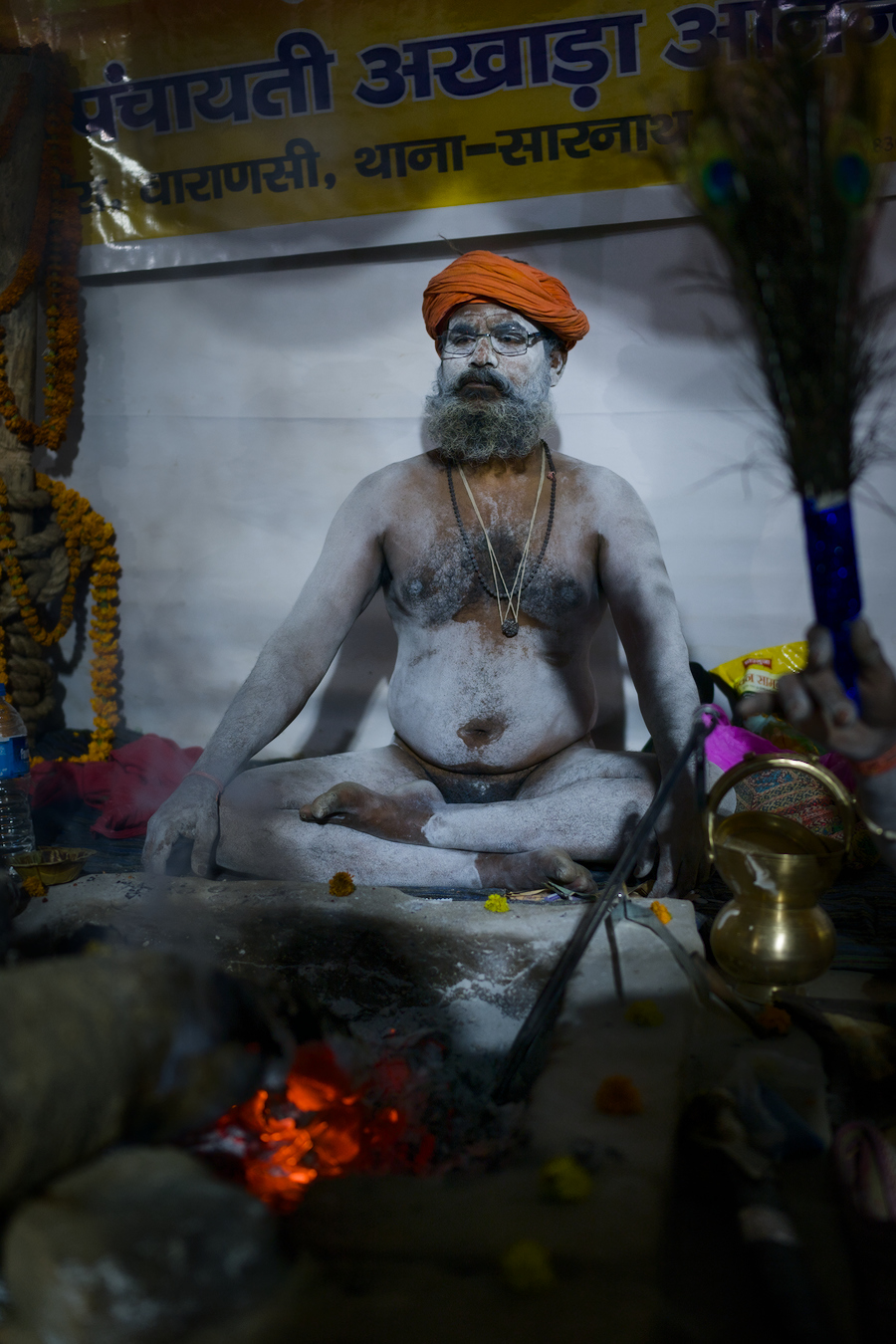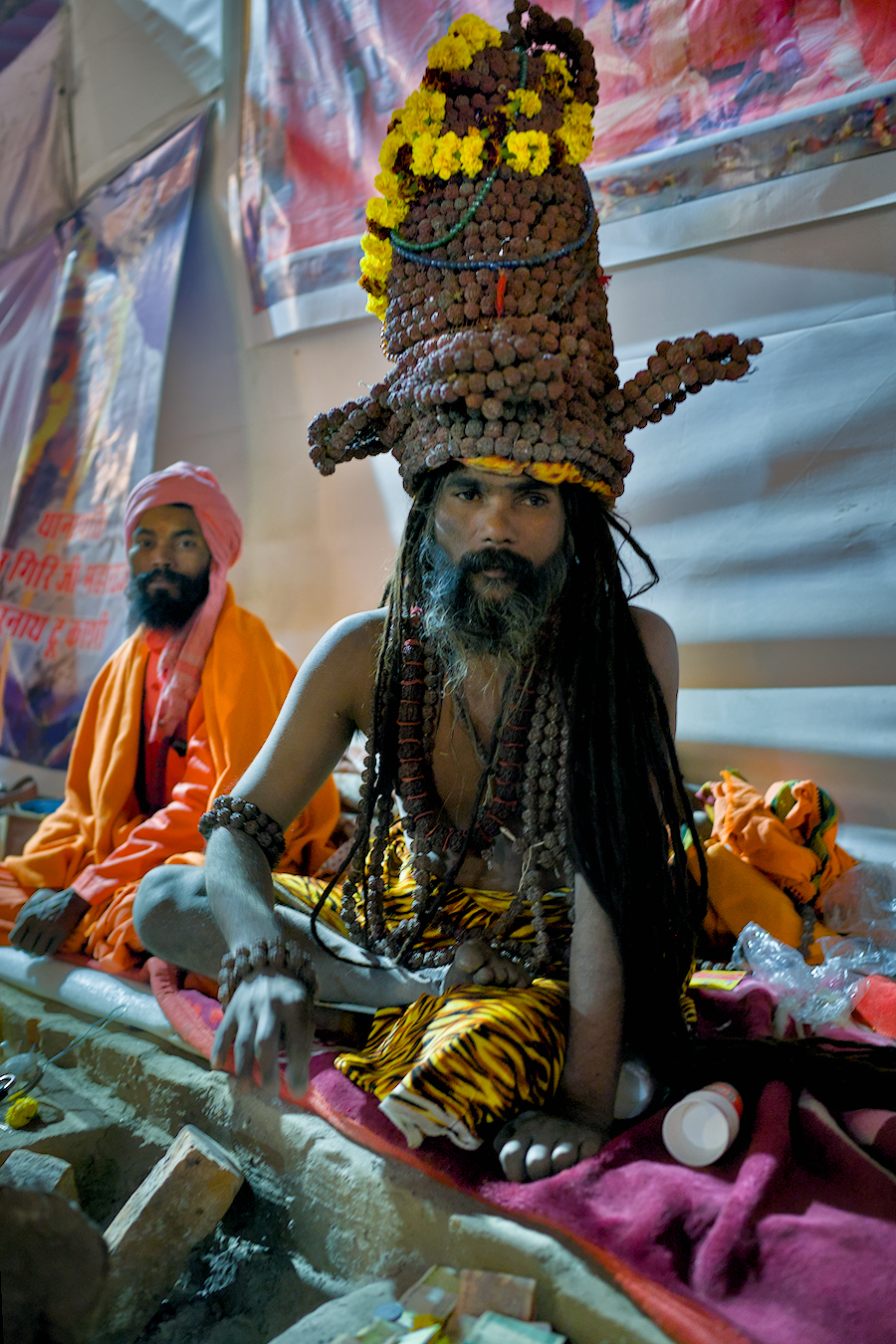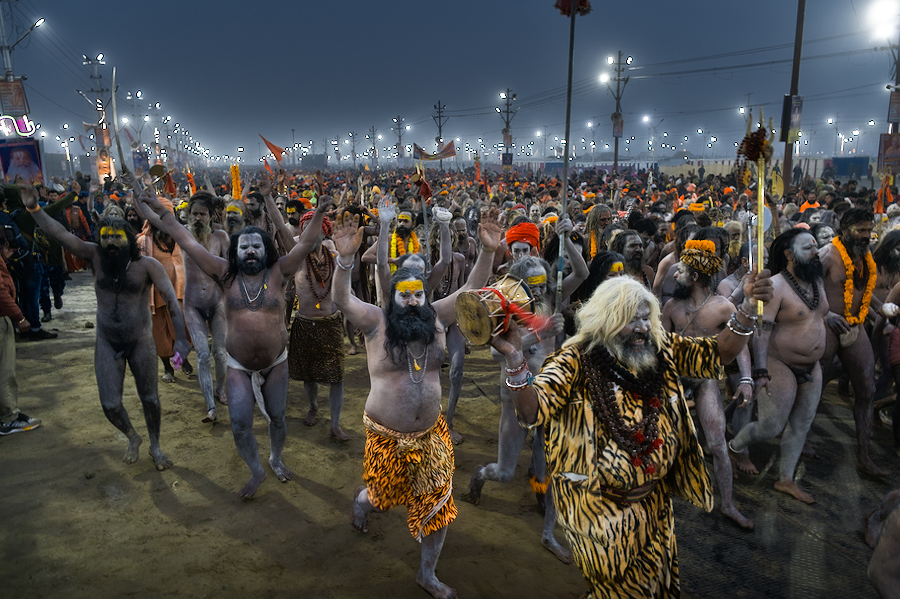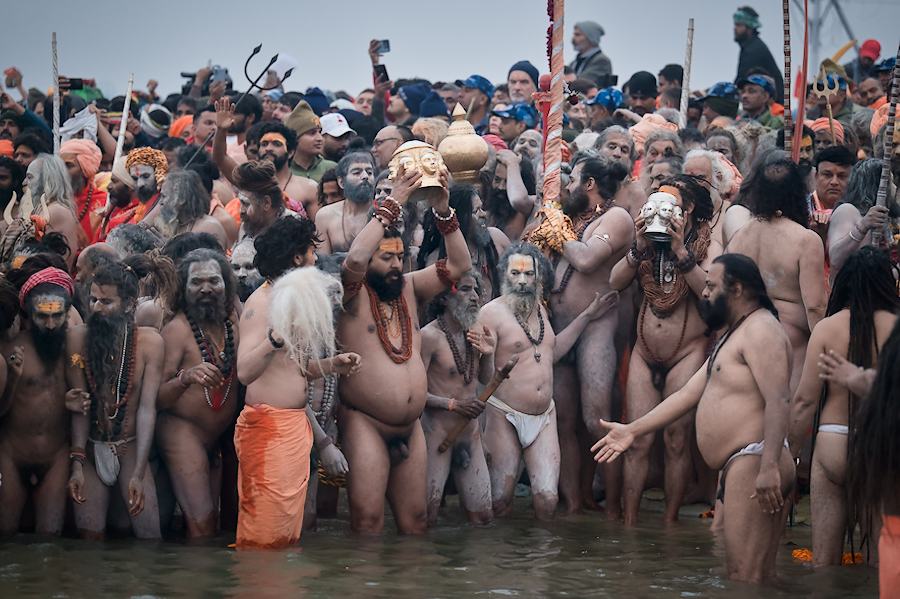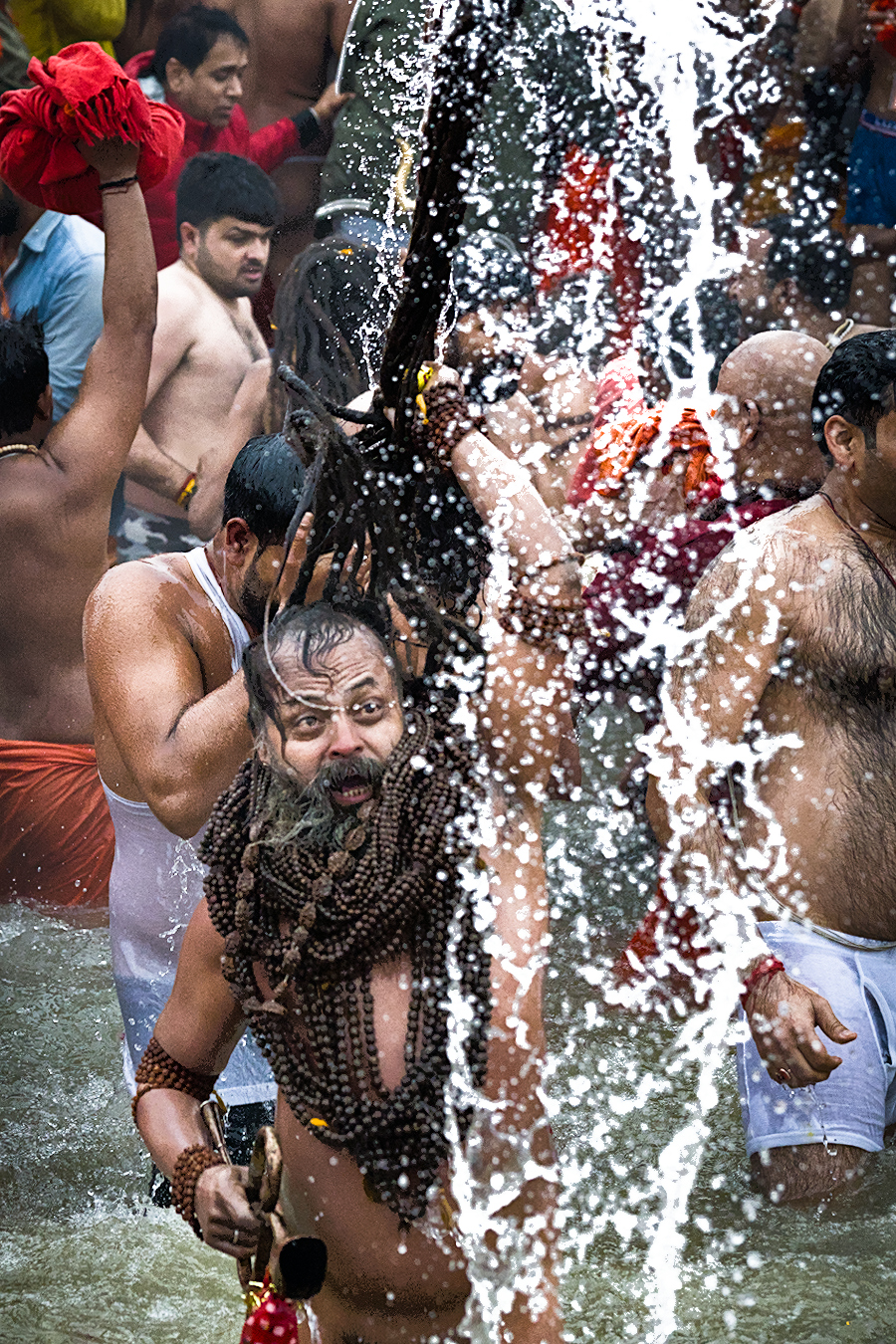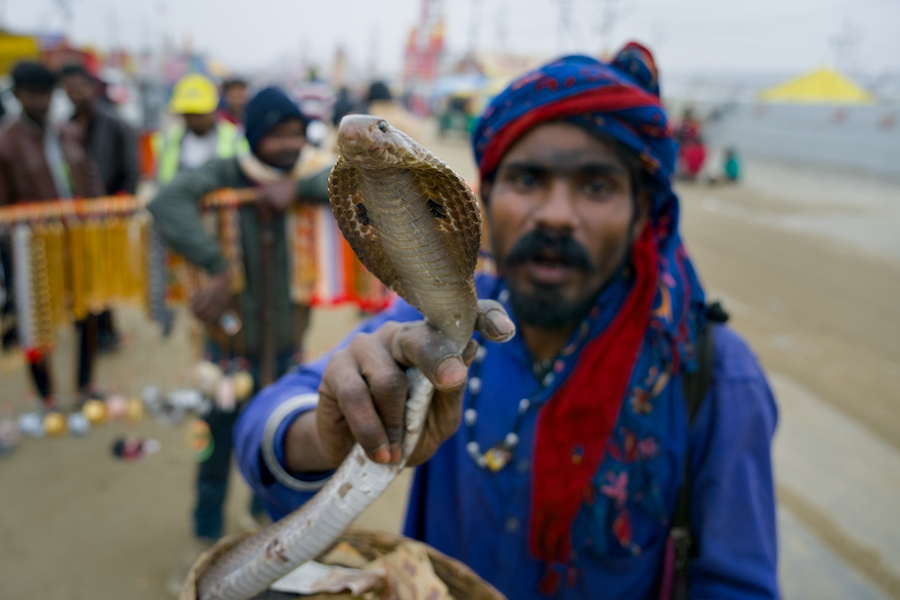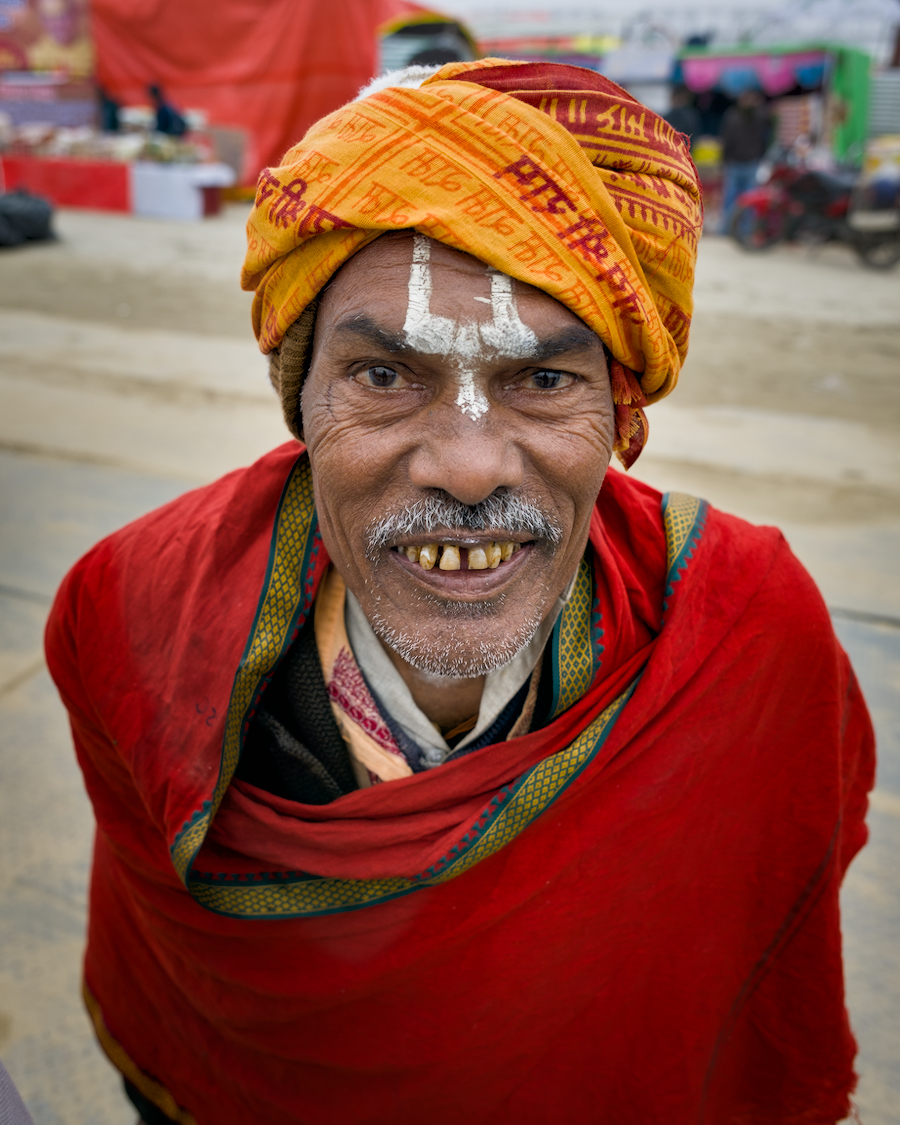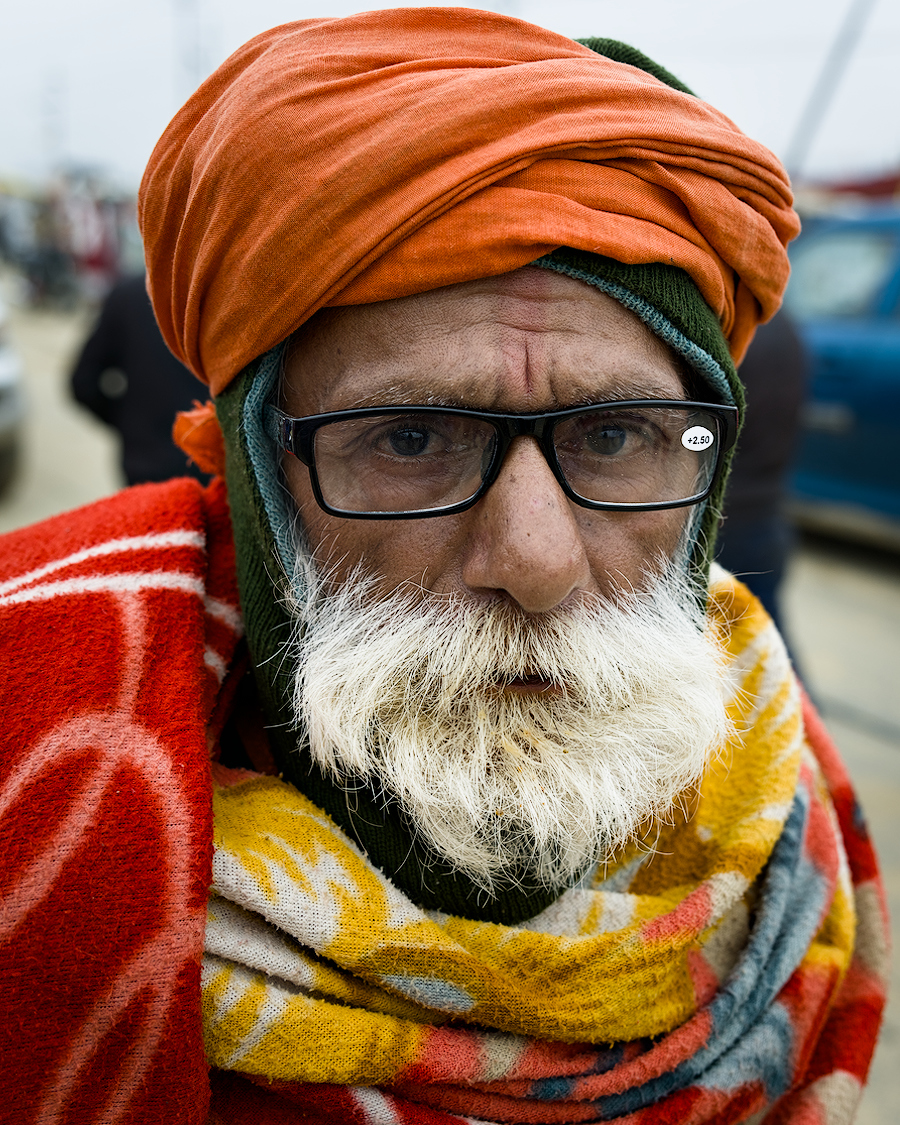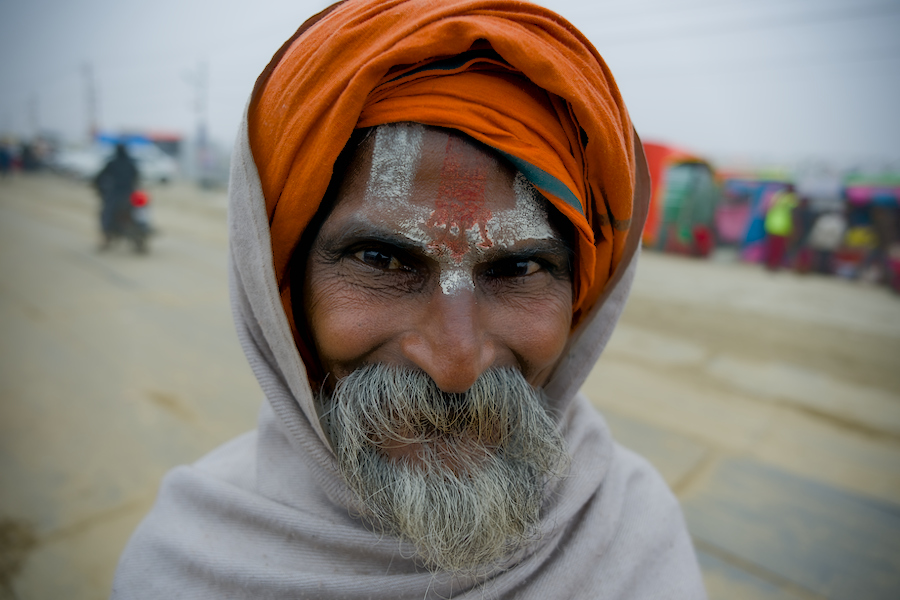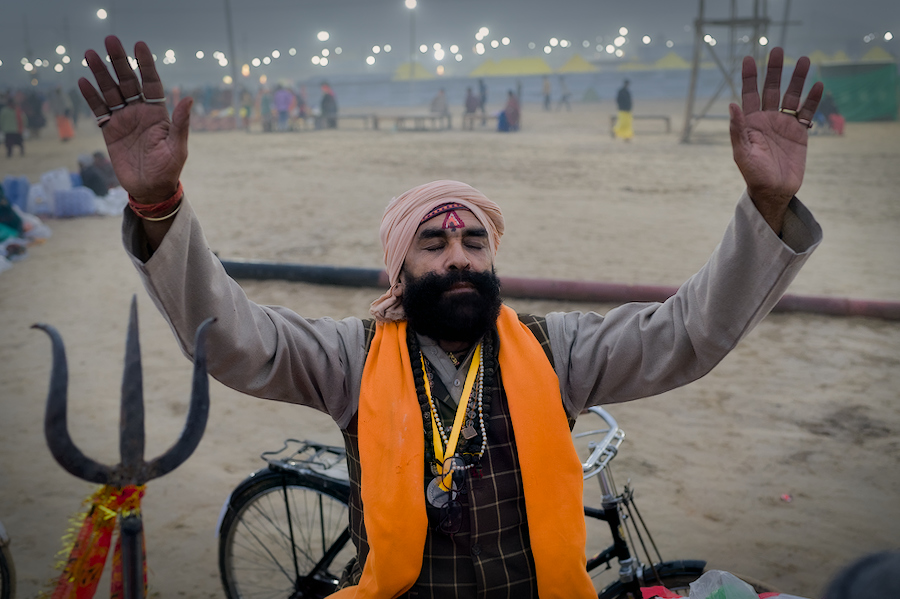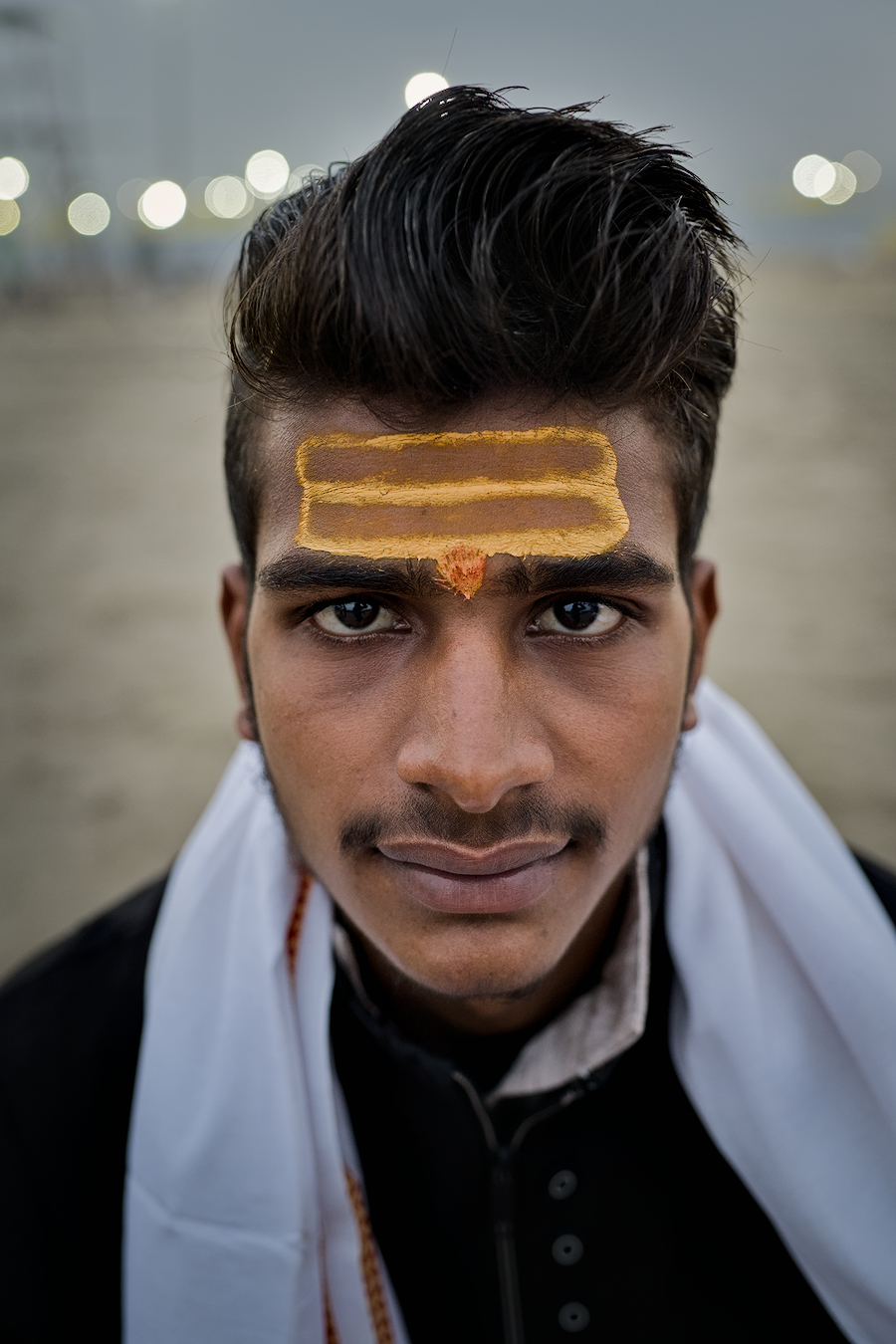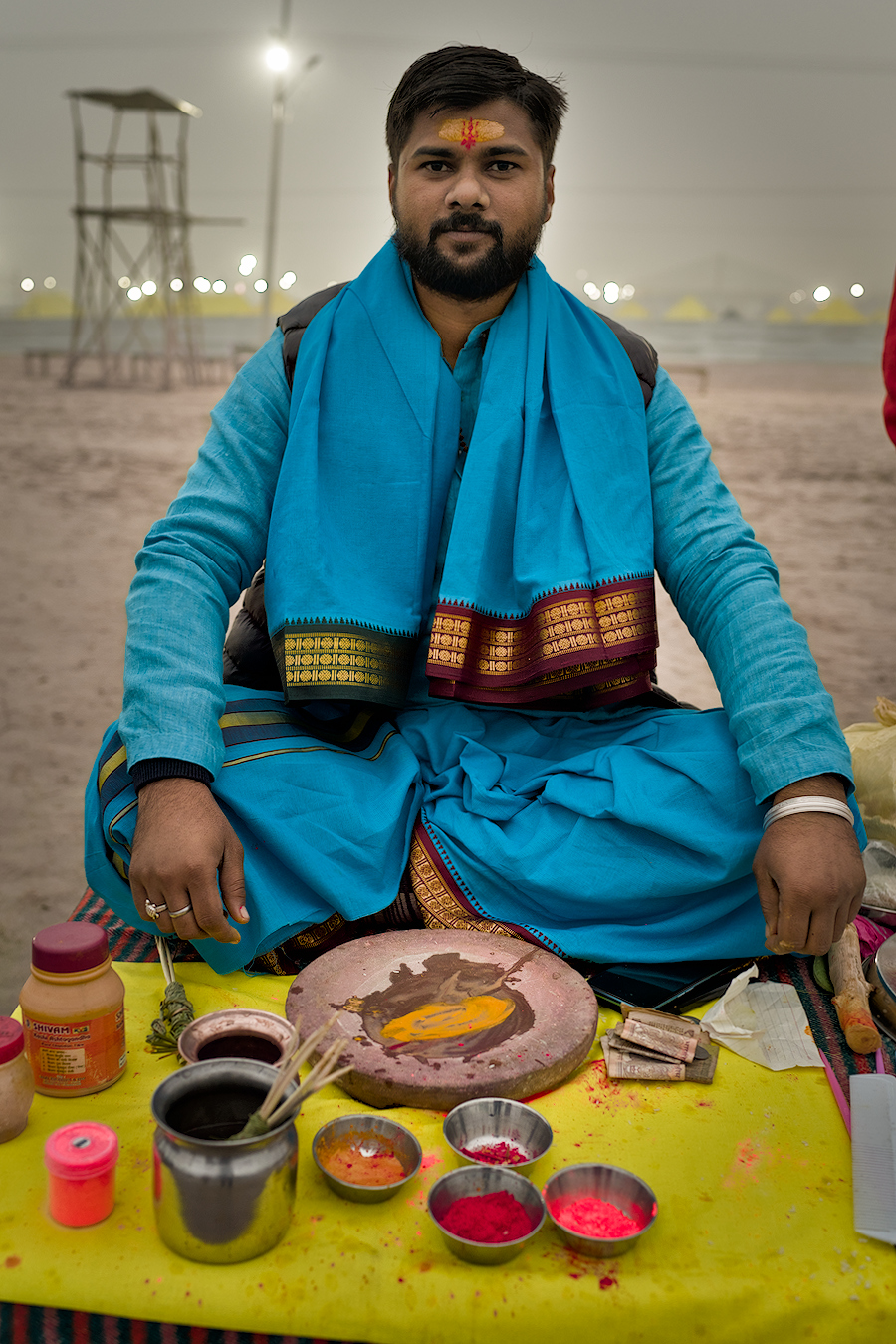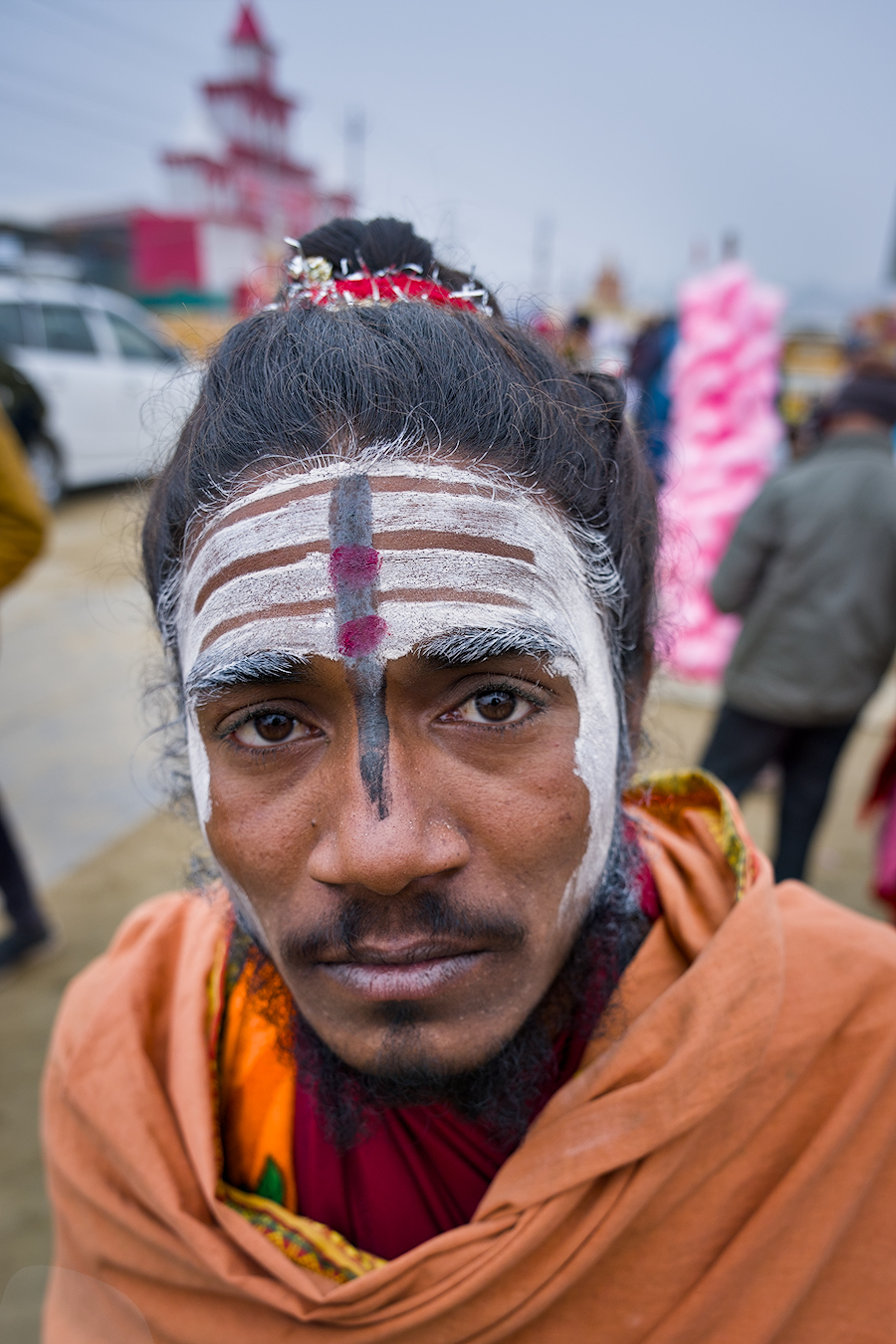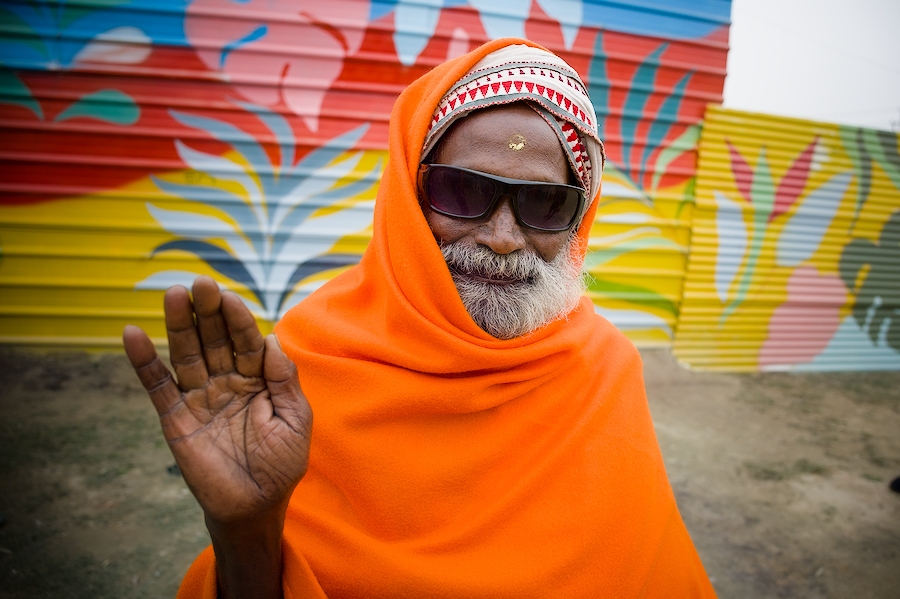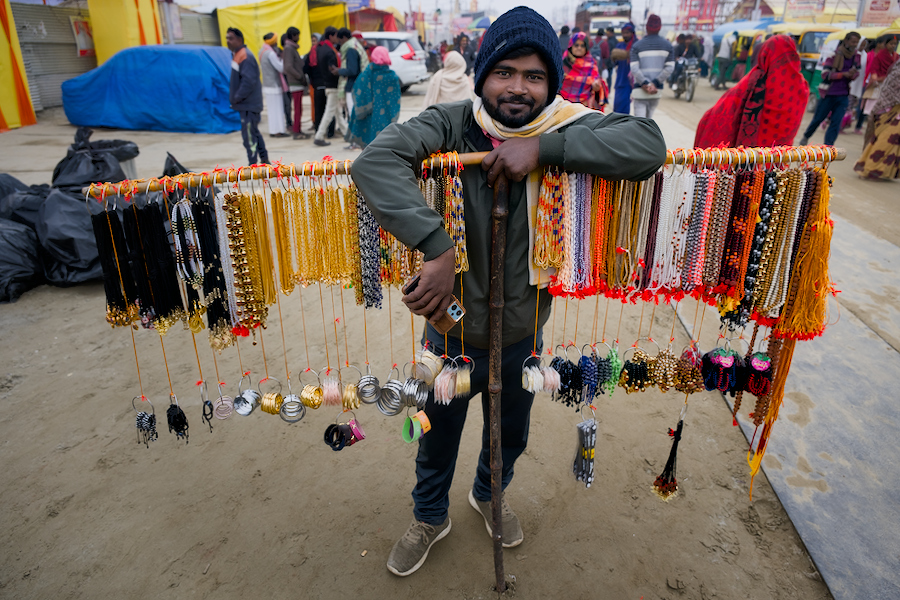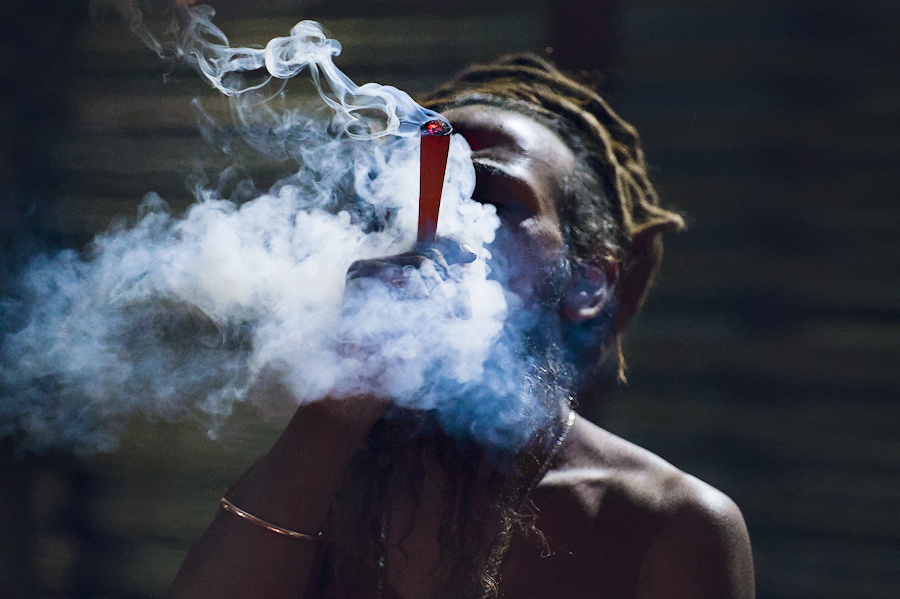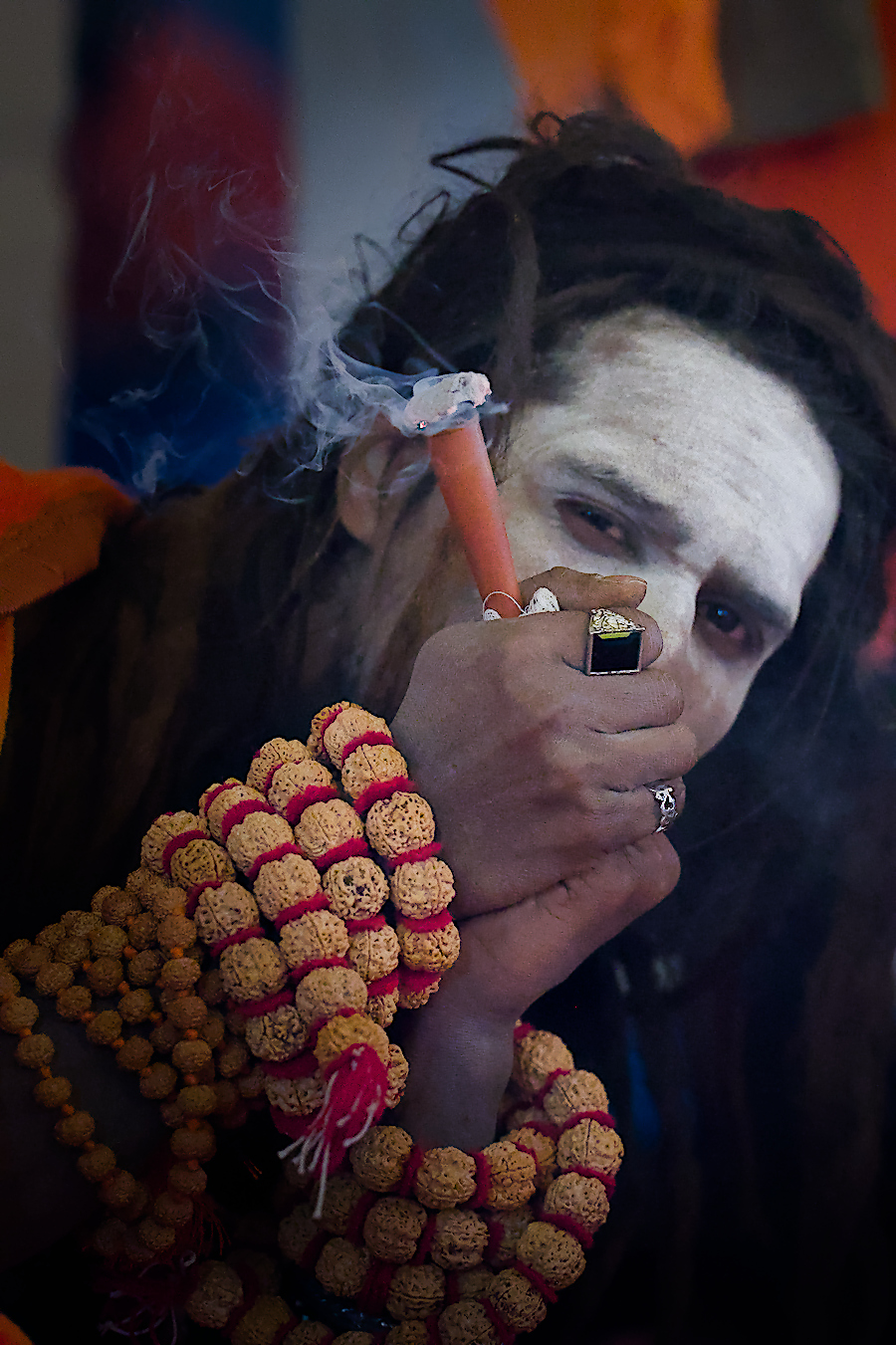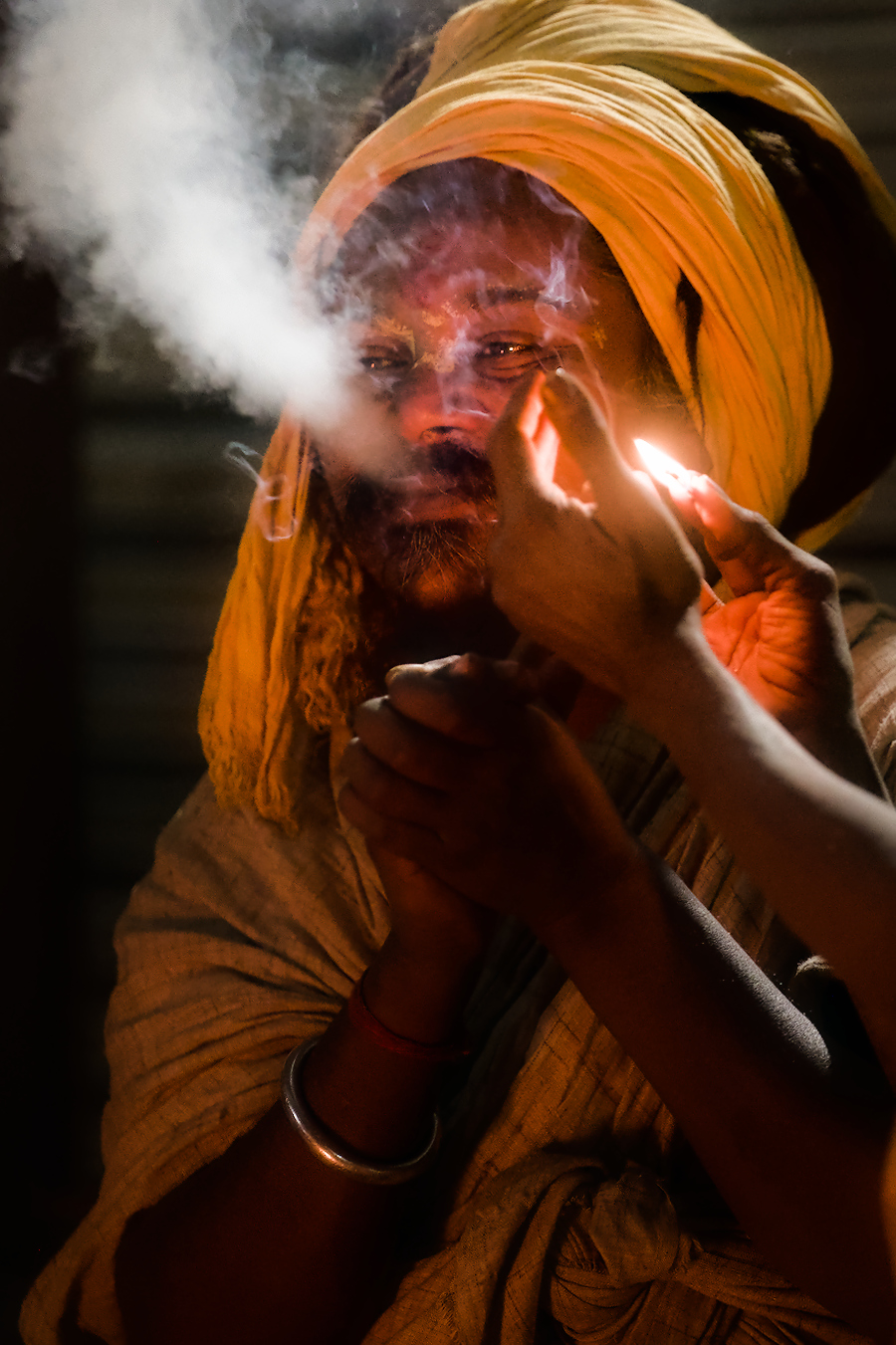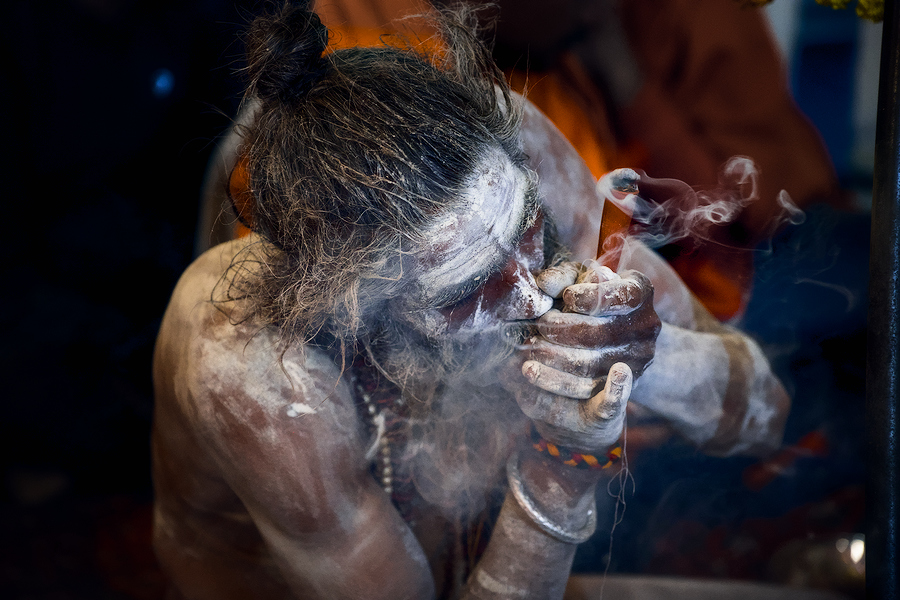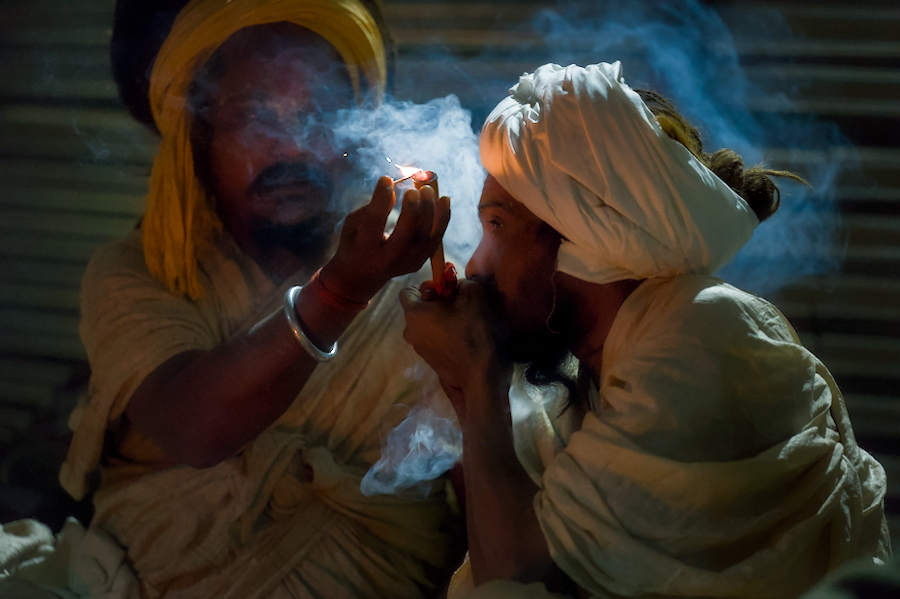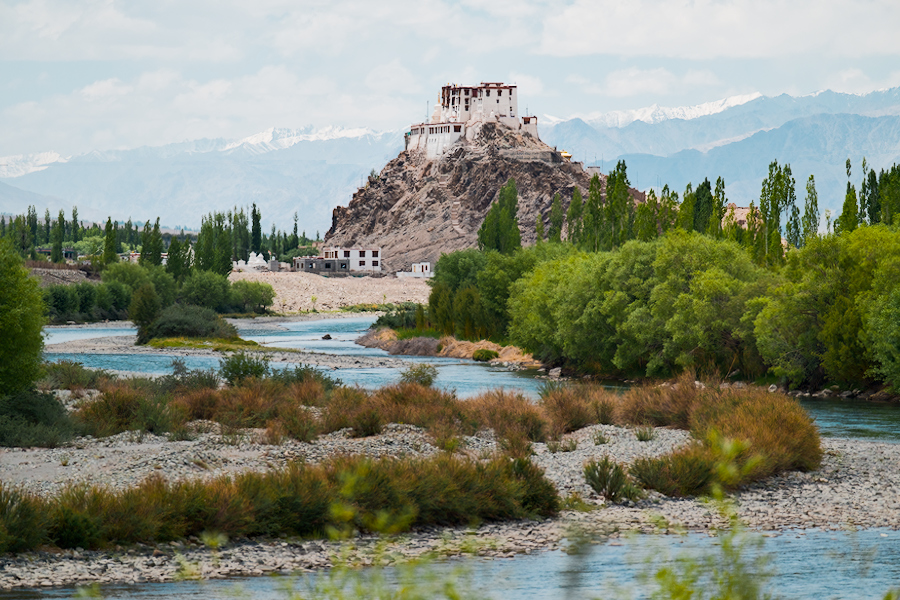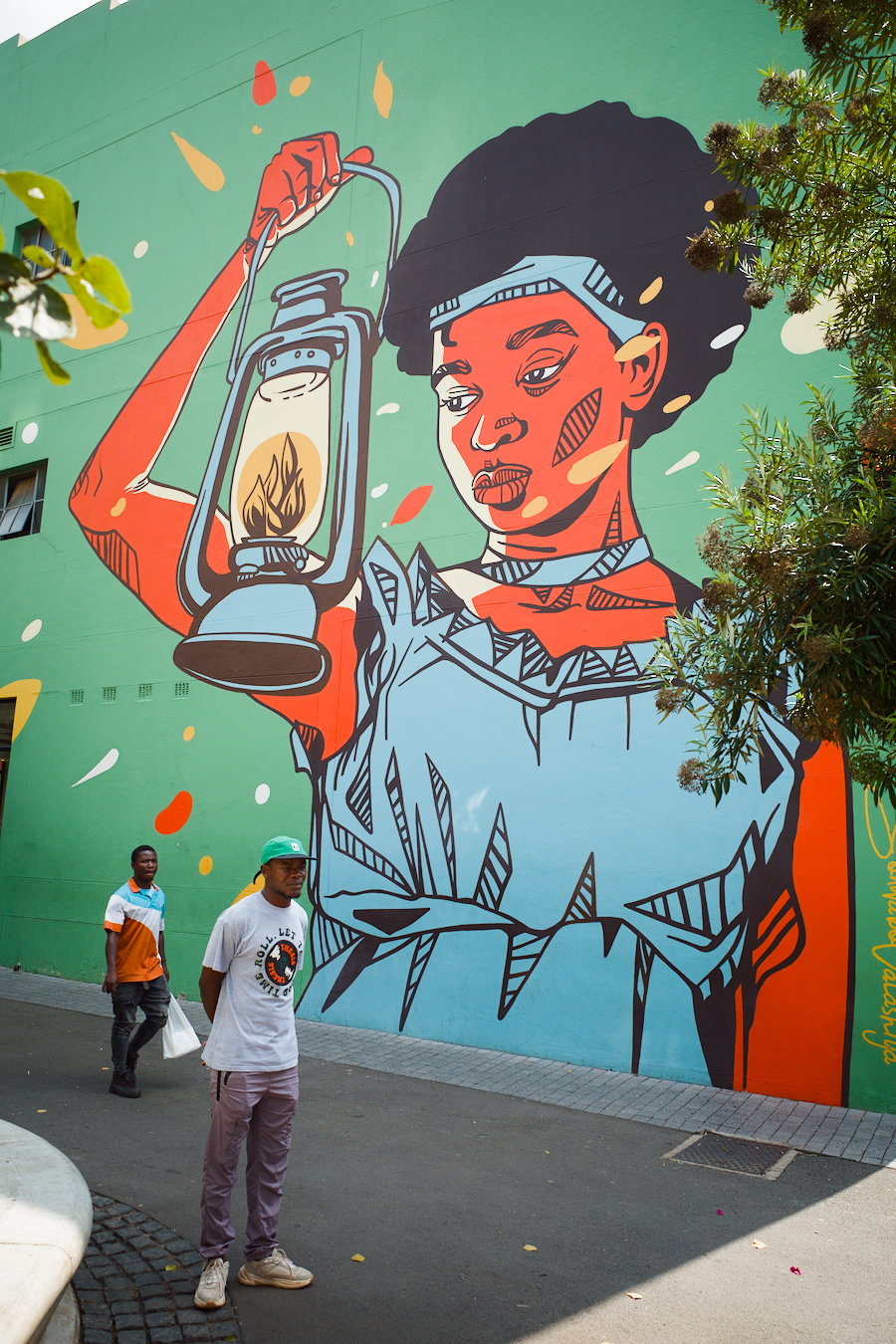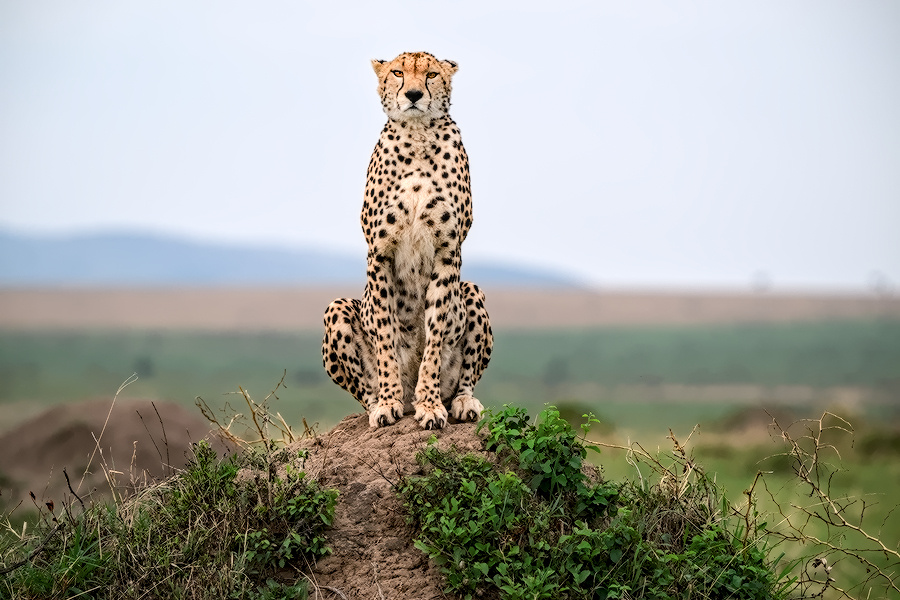Heart of Kumbh – Stories of Faith and Connections
Kumbh still throbs with vitality, an unbroken link to ancient India. It is a spectacle of faith, a grand parade of gurus, and a living showcase of tradition and culture. Here, the spiritual seeker mingles with the seers, photographers with village folk, and content creators with adventure seekers. It is a great equaliser, as the rich get the same treatment as the poor – unless you are a VIP, and money is not the only way to be the VIP.
History of Kumbh stretches back to times when the boundaries between mortals and the divine were blurred, when Gods are said to have walked the earth on which the pilgrims now walk. The scriptures talk of this land as part of a larger world, of realms where the spiritual and the earthly were one.
The experience
There are more women taking a dip in the water than men. It happens in the open, and no one cares about their bodies—or those of others. No one is looking. It’s as if everyone’s minds have turned inward, and physicality has faded away. It’s the energy field of 40 million people (or is it 60 million?) coming together with a shared goal and a sacred heart. I imagine the tiny electromagnetic waves each of us emits, all adding up across millions of people, creating an energy field that transforms everyone.
On the first day of Maha Kumbh, I attend a discourse by SriM, one of the spiritual teachers I follow. He speaks of Shankaracharya’s vision for the Kumbh—to make it an event where ideas are exchanged between people of different faiths. Here, the sadhus and seekers preserve the vital elements of Hinduism, which embraces a diversity of philosophies, where the pursuit of truth and the realization of God have been elevated to the highest realms. He reminds everyone of the story of Kumbh, the place where a few drops of Amrit fell as it was taken from the Rakshasas at the end of the Samudra Manthan. “Kumbh” means pot, also referring to the belly—so he asks us to take back a belly full of the inspiration and happiness that flows here at the Kumbh.
Custodians of traditions
Here gurus are everywhere, with their promise of enlightenment. Some of the Sadhu’s look eccentric, but they are more authentic and normal, and more in touch with their real self. They have broken away from the mould of the world we live in, which we call normal. Maybe we are the ones who are abnormal, trying to live as per social expectations, and out of touch with ourselves.
Blessings of Grandmothers
Alongside the sadhus are the grandmothers from remote villages, engrossed in their own rituals on the riverbank. It is their rituals, performed by millions, that seem to sanctify the water, rather than the water sanctifying their rituals. The power likely isn’t in the water, but in their faith and worship that makes even water divine. The younger ones follow their own modern rituals—selfies and reels. The optimist in me hopes that these will record the rituals forever, but I also know that this may be the last generation to uphold these traditions.
Measure of worth
Most people here would be categorized by economists as part of India-2 or India-3—terms used to judge people based on their ability to buy, the modern world’s measure of success. Most of the pilgrims here carry the majority of their life’s possessions in a bag on their heads. But these classifications miss the essence of real India and the true source of its strength: their capacity for generosity. Blessings flow freely—often the only thing these pilgrims have to give, and yet it feels like the most valuable gift. They shower their goodwill on you, no strings attached, leaving you feeling both humbled and uncomfortable. We city folks no longer belong in that world of love.
Faith and identity
Faith is identity here. But holding onto one’s belief often requires a choice—a preference that inevitably diminishes others. These fault lines of faith are sharp and can sometimes lead to intense confrontations. I overhear the sadhus gossiping about how a clash between two sects was narrowly avoided yesterday. The administration had mismanaged their routes, bringing them dangerously close—one sect returning from the holy bath, the other on its way. But somehow, cooler heads prevailed.
The Sadhu’s of Kumbh
I sit by the dhuni (the sacred fire) of the Naga Sadhus, sharing its warmth with a few sadhus and their followers. They rebuke, encourage, or ignore those gathered around them, each interaction a subtle lesson, tailored to the individual. These sadhus, uneducated by conventional standards, possess a heightened sensibility and an uncommon wisdom. They have renounced the material world, yet understand its nuances better than most.
The ones who bear the brunt of their sarcasm are those who ask questions intellectually rather than from the heart. One sadhu, irritated by a persistent girl’s line of intellectual questioning, jokes that she should just Google her query instead of disturbing him.
Nearby, a woman wears a saffron robe more as a fashion statement than a mark of renunciation. A sadhu asks her if she identifies more as Meera Bai or Radha. This sparks a discussion among the sadhus about the difference in their devotion — Radha surrendered completely to her love, while Meera lived in the longing of separation. Both being aspects of Bhakti Yoga. The conversation is abruptly interrupted by a phone call; the sadhu gets up to meet a devotee who has just arrived.
Another devotee boasts about the money he is spending on temple construction. A sadhu snubs him, saying it is wrong to put a price on a temple—its worth is not measured in money. They treat this millionaire no differently than they do a simple schoolteacher from a small town, sitting quietly among them.
A Naga Sadhu chats with a Russian photographer, telling him he wants to see Russia. I tease him, saying the world is the same everywhere. The sadhu says that he wants to learn about the ways of the world, just as we are here to learn about the ways of the sadhus. He is effortlessly juggling five conversations at once, shifting roles depending on the person—friend to some, teacher to others, project manager to a few, and indifferent to the rest. It has been 24 hours since he last slept, but his devotees keep coming. He wants to be available to them— it is a big day.
The holy dip
As the hour for the holy bath approaches, the air becomes electric. They shoo away all the devotees, shed their garments, apply oil and smeared it with the ash of their Dhuni — their homage to Shiva, who wore ash as a reminder of life’s impermanence. It’s a three-hour procession to the river. They tear through the crowds chanting, running, dancing. Awe, fear, and exhilaration ripple through the crowd as they run past them in their huge processions. They pause at the river bank as their guru leads a prayer. It is a sacred moment that has come after 144 years. As their Guru finishes the prayer, they all jump in. They are all children in the water. Cold water loses its sting, and there is laughter, chants and playfulness everywhere.
Connections and conversations
I am at the Kumbh to photograph and capture the essence of the Maha Kumbh. We are a bunch of photographers who have come together from all parts of the world, led by Apratim Saha. My camera becomes a way to connect and to share a moment with people. For them being photographed is almost like being seen and acknowledged. A brief conversation and the click of a shutter become a single act. Every time I fail to establish this connection with my subject or don’t fully immerse myself in the moment, the image feels empty—a hollow snapshot devoid of soul.
These are simple yet profound conversations. I ask them about their villages, and they ask about me—not to judge, but out of curiosity. A couple of boys admire my camera. I hand it to one of them to try, but he is dissatisfied with his shot. Another man stops to chat—he works with the sanitation crew, tirelessly setting up the thousands of toilets essential for an event of this scale. He grumbles about the workload, yet his efforts form the invisible backbone of this massive gathering. The Kumbh is not just a triumph of faith—it is a triumph of logistics too.
A sadhu approaches me, demanding that I take his picture—and that it better be a good one. His aggression is fake, and I know he’ll ask for money afterward. I play along, directing him, moving him around, tiring him out a little. He softens slightly, then asks for ₹500. I stay polite and offer to send him the photo instead. He insists on the money. Knowing it could turn into a scene, I hand him ₹100. He puts on a show of disappointment, but I’ve already disengaged, and he senses it. He takes the money, blesses me, and walks away.
At a nearby tea stall, a young boy eyes my camera gear and asks how much it all costs. I hesitate, trying to steer the conversation elsewhere. He wants to know what I do with the pictures and whether I make money from them. I tell him it’s just a passion—I shoot for my website and Instagram. He asks how many followers I have. “About 1300” I reply. He looks at me, slightly puzzled, and repeats the number. Then he grins. He has a YouTube channel with around 3,000 followers—more than me. Laughing, he teases that if he had my equipment, he’d have way more. He films with a basic phone, making videos of his brother, a priest at a temple. We share a good laugh about how he’s far more social media-savvy than I am.
What pulls people to Kumbh
The experience of the Kumbh is hard to put into words. There are accidents and tragedies, just as there are miracles and moments of ecstasy. Some lose their way, while others find their soul. Many endure hardships, yet some discover ultimate peace. For some, the crowds are overwhelming; for others, they bring a renewed sense of hope.
Whatever you receive here is what you needed—even if it wasn’t what you were looking for. No one leaves untouched. Everyone who enters its fold is, in some way, transformed.

